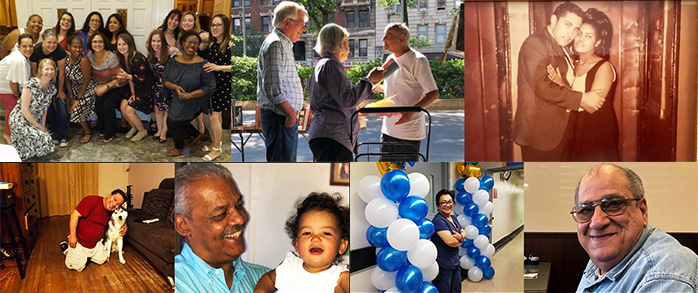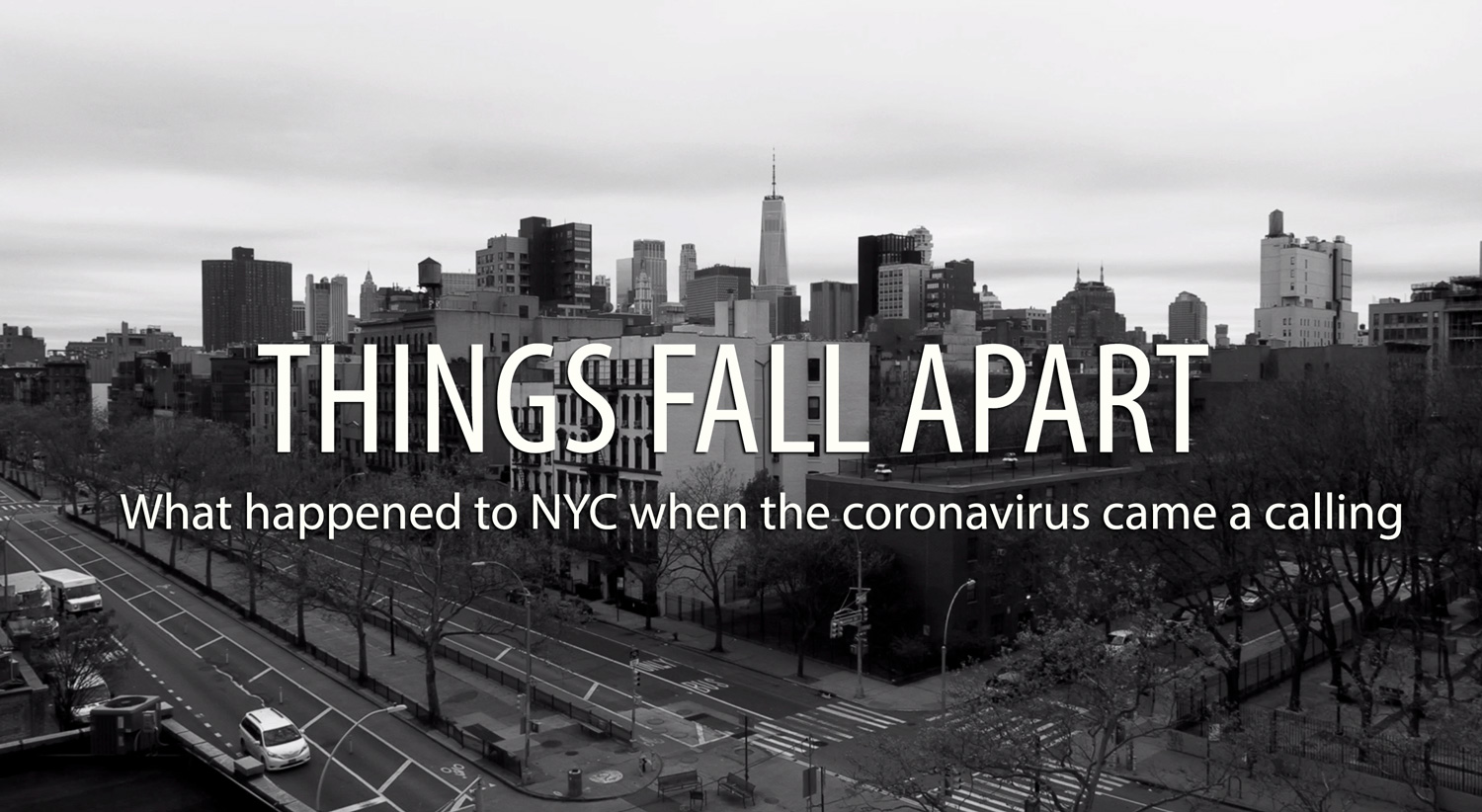
Things Fall Apart
What Happened to New York City When the Coronavirus Came CallingFor the first few months of 2020, New York City looked and felt as it always had —vibrant, bustling, invincible. The sounds of subway buskers vibrated through train cars, the never-ending line wrapped around the block outside of Katz Deli, tourists crowded Times Square as locals weaved between them, and the city never slept.
In February, whispers of a deadly virus began to intensify. By March, the whispers had become a crescendo, the only thing anyone could hear. Coronavirus infiltrated the city and suddenly, within days, New York became the nation’s epicenter of the viral pandemic. Emergency tents popped up in Central Park, a Navy hospital ship docked at Pier 90, and refrigerated trucks parked outside hospitals.
And just like that, it felt as if the city that never slept was all but knocked out. Non-essential businesses closed. Shelter-in-place, what Gov. Andrew Cuomo called PAUSE, began. Face masks and a six-foot distance became mandatory. In just a few weeks, the city lost more than 15,000 people. It was as if we swiped our creased yellow Metro Card, paid the $2.75 fare, and pushed through the turnstile into a new life, a new city, a new world.
This year’s NYCityLens team began covering the city in January, eager to report on the five boroughs and tell their stories. In time, it turned out there would be just one story—the Coronavirus pandemic. Here’s how the story of a city under siege unfolded.
01.22.20
President Donald Trump
“We have it totally under control.
It’s one person coming in from China, and we have it under control.
It’s going to be just fine.”
![]()
THE BUILD-UP
The Build Up
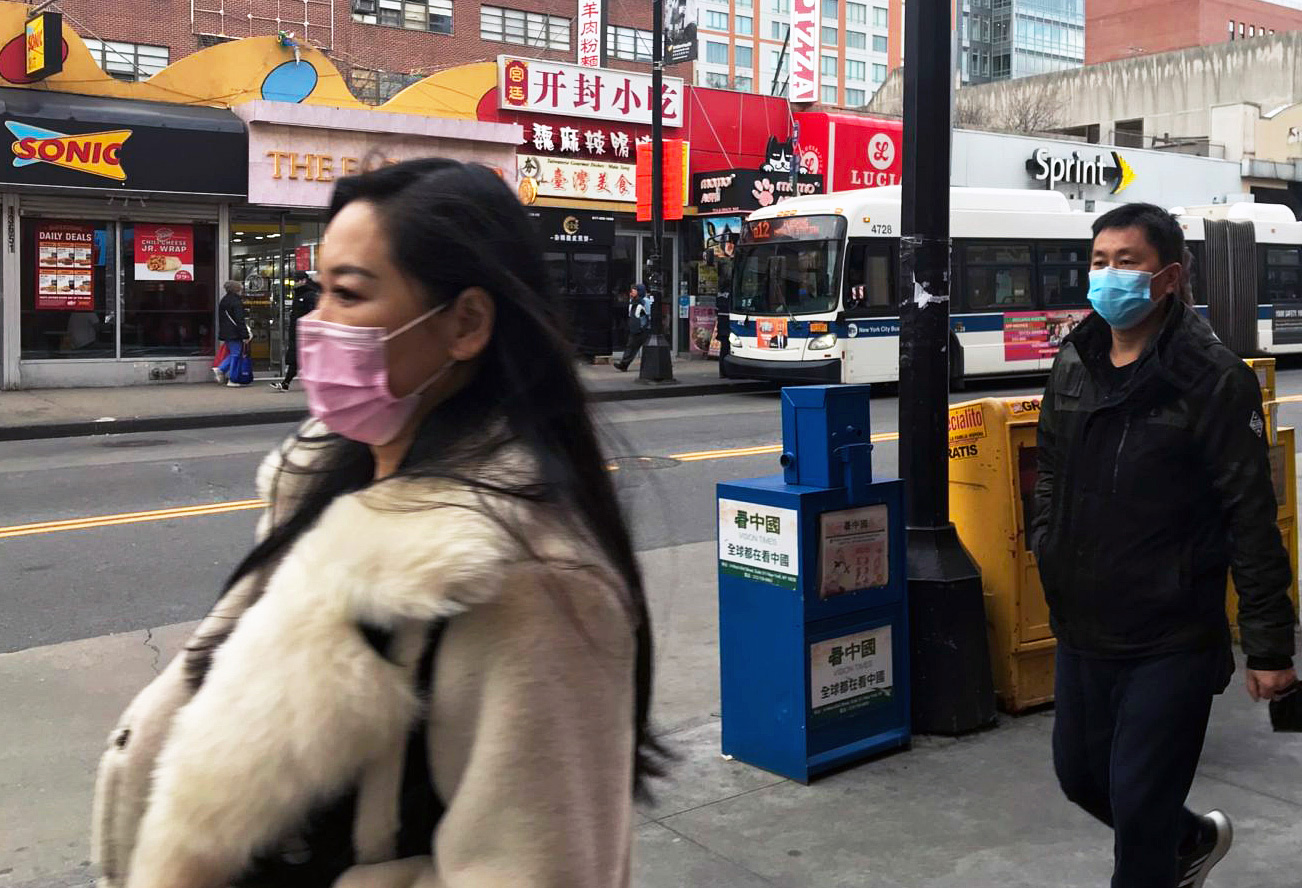
When the first cases of the coronavirus emerged in the U.S., New Yorkers reacted in different ways. Some regarded it as a passing illness. Others began to see small, but telling, signs that their daily lives might be disrupted. Many began to prepare for what they guessed might grow into something more insidious.


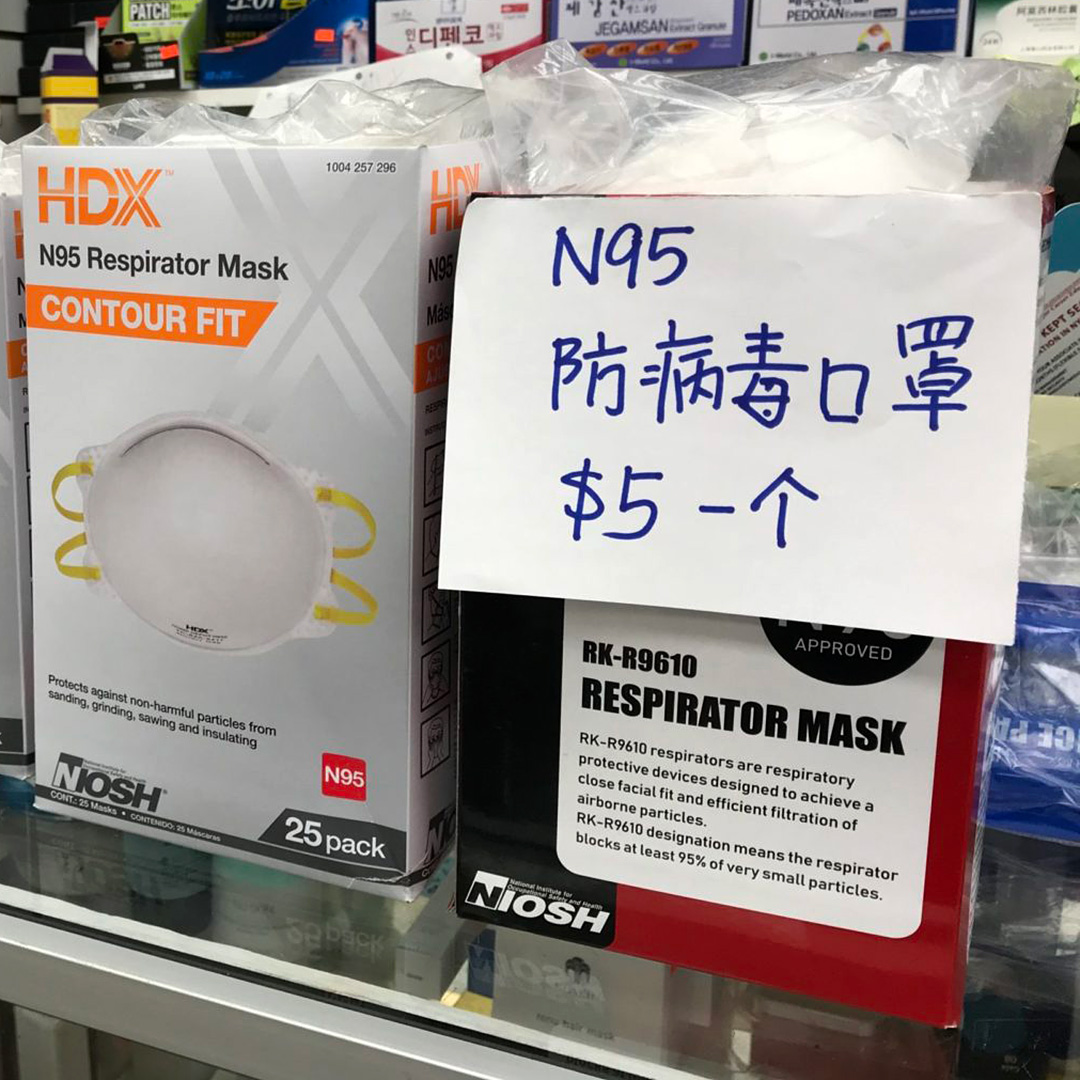
01.28.20
Travel to China Still a Go for Many
In early 2020, the CDC issued its highest level travel warning and China restricted citizen tour groups from leaving the country. For many U.S. travel companies though, it was still “business as usual.” Maureen Flynn, a Brooklyn-based travel agent, had known about the coronavirus since it was first reported in China. In January, with no confirmed cases in New York, she said she would still travel there. “I would need more information before I was overly concerned,” she said.

Catholic Church Takes Communion Wine Out of Mass
Catholic churches in Brooklyn and Queens altered their communion routines as the threat of coronavirus began looming. Father Raphael Zwolenkiewicz from the Most Holy Trinity Church in Williamsburg said that the diocese gave instructions to priests to tell people not to take the wine if they did not feel well.
Face Masks Begin Selling Out
In the Chinese community in New York City, rumors on social media about the spread of coronavirus stirred fear and prompted many to purchase facial masks. As of Jan. 31, six cases had been confirmed in the United States. None were in New York State. “The main reason is that the news coverage of the outbreak at home and abroad made us worry about the health and safety hazard,” said Zhipu Ye, senior vice president of Columbia University’s Chinese Students and Scholars Association.
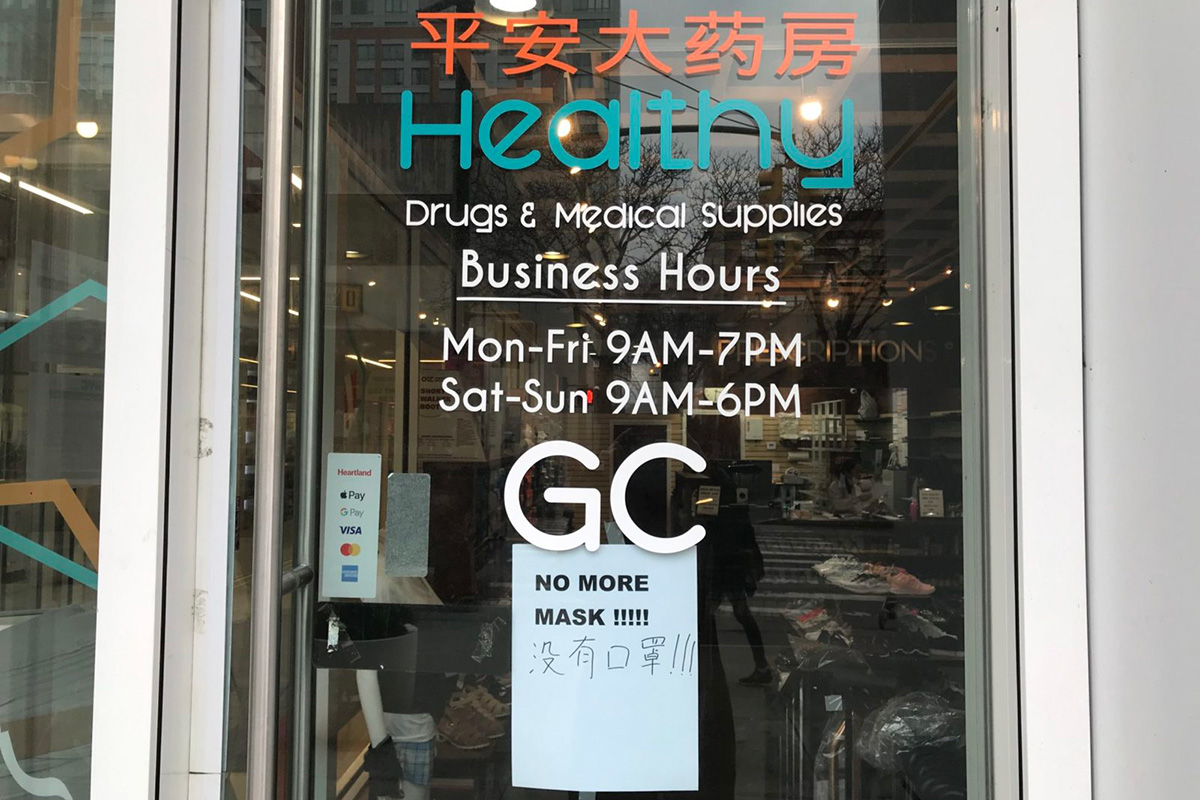
Nursing Homes Start to Prepare
Nursing homes in New York City were gearing up to protect their residents from the coronavirus. The rapid spread of the potentially deadly virus, and especially the pocket of fatalities in a Washington facility, raised alarms over safeguarding the city’s most vulnerable populations: the elderly and those with underlying health conditions. “If you haven’t dusted off your pandemic plans, now would be a good time to do so,” Joel Ackelsberg, M.D., a.medical epidemiologist, told healthcare providers during a group call.
The First Confirmed Case
After the first confirmed coronavirus infection in Manhattan, on the night of March 1, residents around the city rushed to get prepared out of fear that the virus was spreading. At H Mart Supermarket in Morningside Heights, students living nearby lined up to stock up on food late Sunday evening. Frozen food, grains, and noodles were among the most popular for their long shelf life. Store employees refilled shelves almost as fast as they emptied. However, some shelves were already bare. “We brought more than $500 of food and even board games,” said Wenyu Han, a Chinese graduate student who lives with roommates. “Just want to be prepared for the worst case scenarios.”
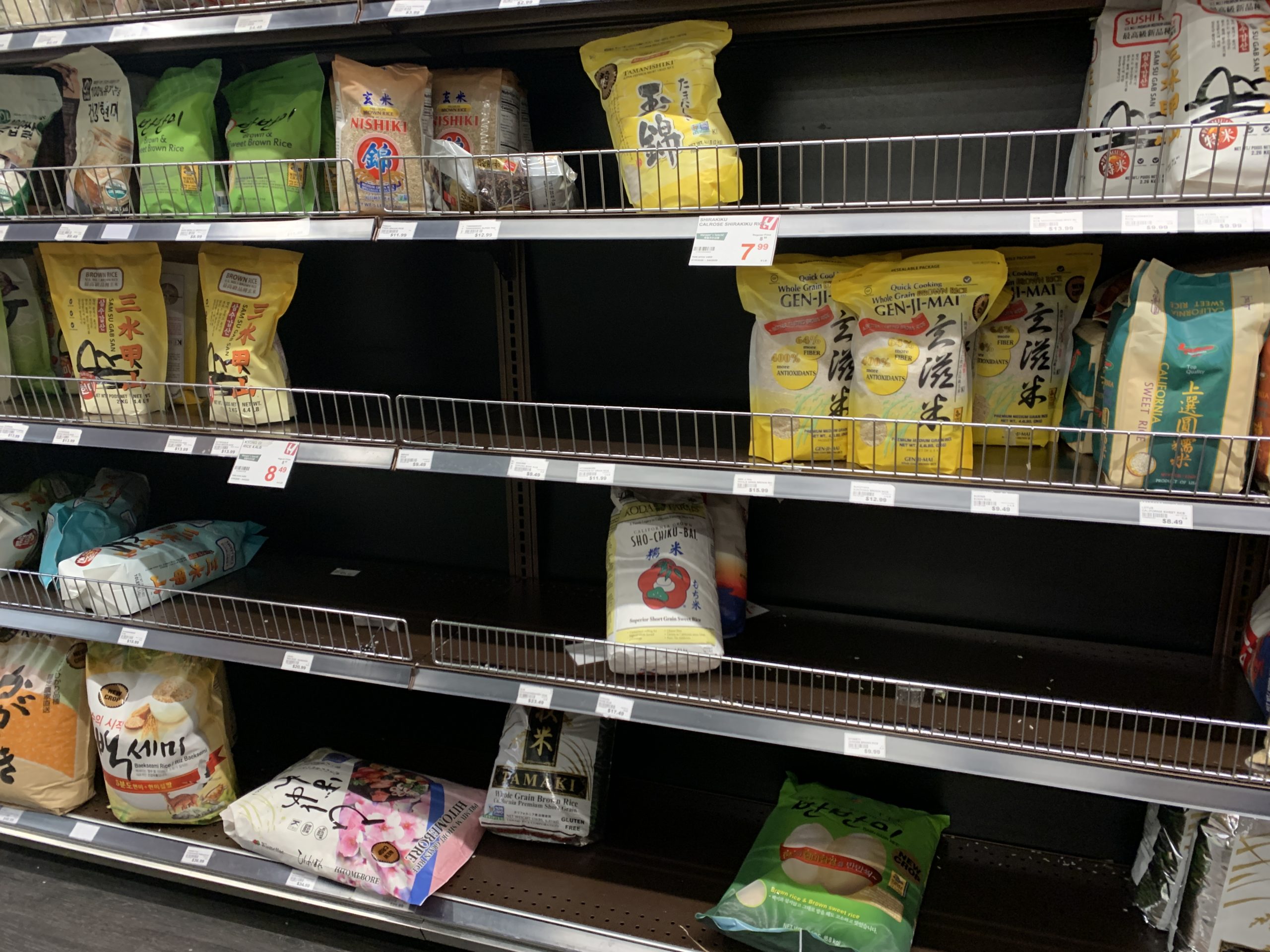
03.2.20
Gov. Andrew Cuomo
“Excuse our arrogance as New Yorkers, we think we have the best health care system on the planet right here in New York. So, when you’re saying, what happened in other countries versus what happened here, we don’t even think it’s going to be as bad as it was in other countries.”
![]()
The butcher at Boky, a restaurant in Chinatown, studied the rows of roast ducks hanging in the window. He selected one and cut up the bird on his chopping block before neatly placing it on a nearby plate.The duck was cut, the tables set, and the waiters ready—but the food sat there waiting. Despite no confirmed cases of coronavirus in New York City, Chinatown restaurants in both Manhattan and Queens have lost business. “We’re hanging on,” said Boky’s manager, Hung Ngo. “But if we don’t have customers, how are we going to stay open?”
“We’re all sitting in a boat. If the boat sinks, we’re all sinking together.”
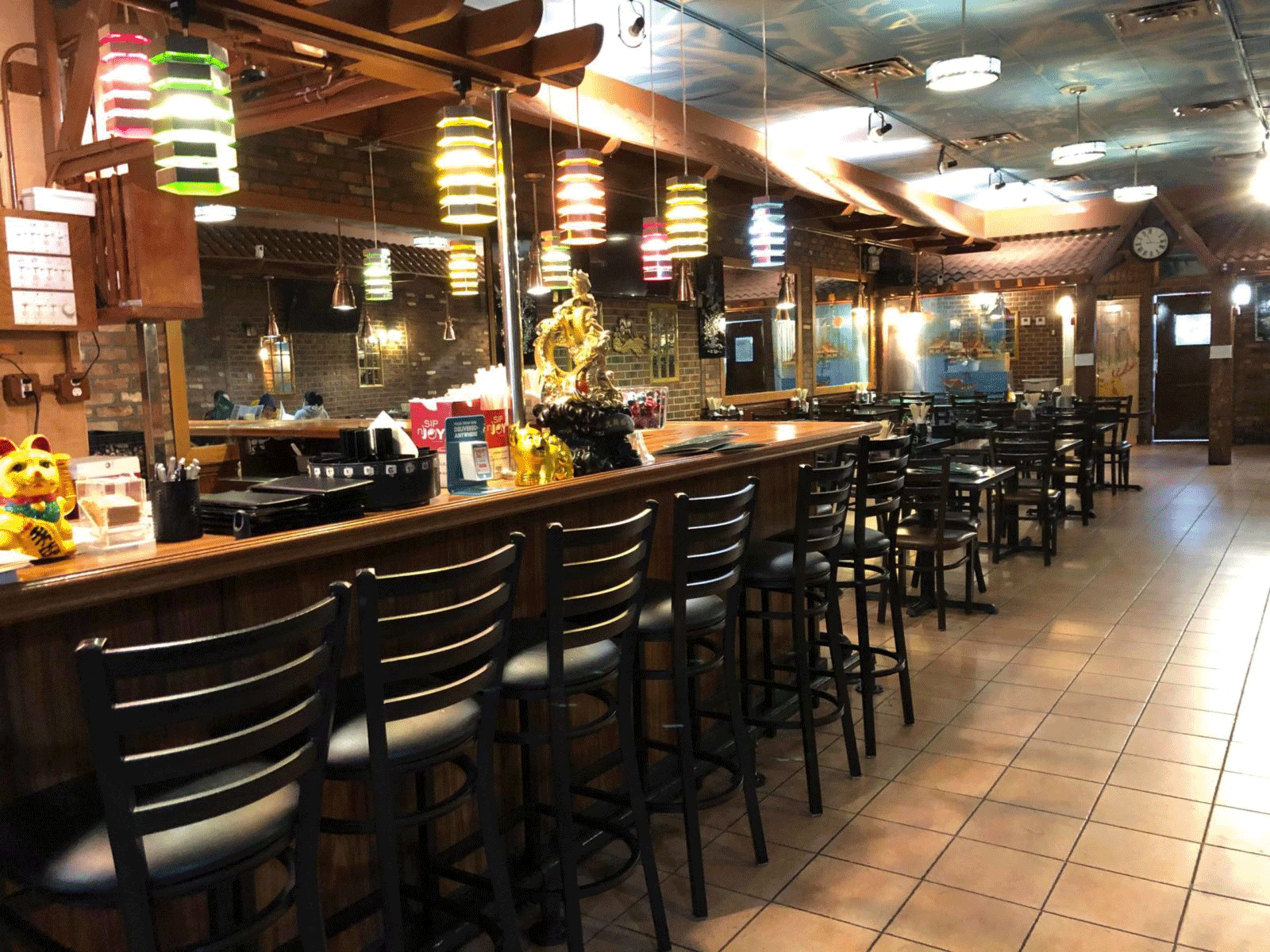
Bias Incidents Worry Asian New Yorkers
As the coronavirus spread globally, anxiety started spreading among New Yorkers. Many Asian New Yorkers and Chinese students reported incidents of bias and open hostility against them, especially when they were wearing protective masks. A viral video showed an Asian woman, who was wearing a mask, getting beaten by a man with an umbrella on the subway. With reports like this, some Asians in New York said they are even worried about their safety. “Wearing a mask may be politically more dangerous from the consequences of not wearing a mask against the virus,” said the woman who videotaped the incident (and asked to remain anonymous).
A Whistleblower’s Death
Chinese students gathered in Washington Square Park on Feb. 8 to hold a memorial for Li Wenliang, the doctor who first sounded the alarm on the coronavirus. Li, 34, died of COVID-19 in Wuhan, catalyzing public outrage against the Chinese government. On December 30, Li sent a message to a WeChat group of doctors, warning them that seven patients had contracted a respiratory condition similar to Severe Acute Respiratory Syndrome, or SARS, which killed nearly 800 people in 2003. Li became a heroic figure in the media, both in China and abroad. “He is an icon, a symbol of the emotions of anger and sadness we feel against the virus and against authoritarianism,” said Caesar Hsu, 25, a Fordham student.
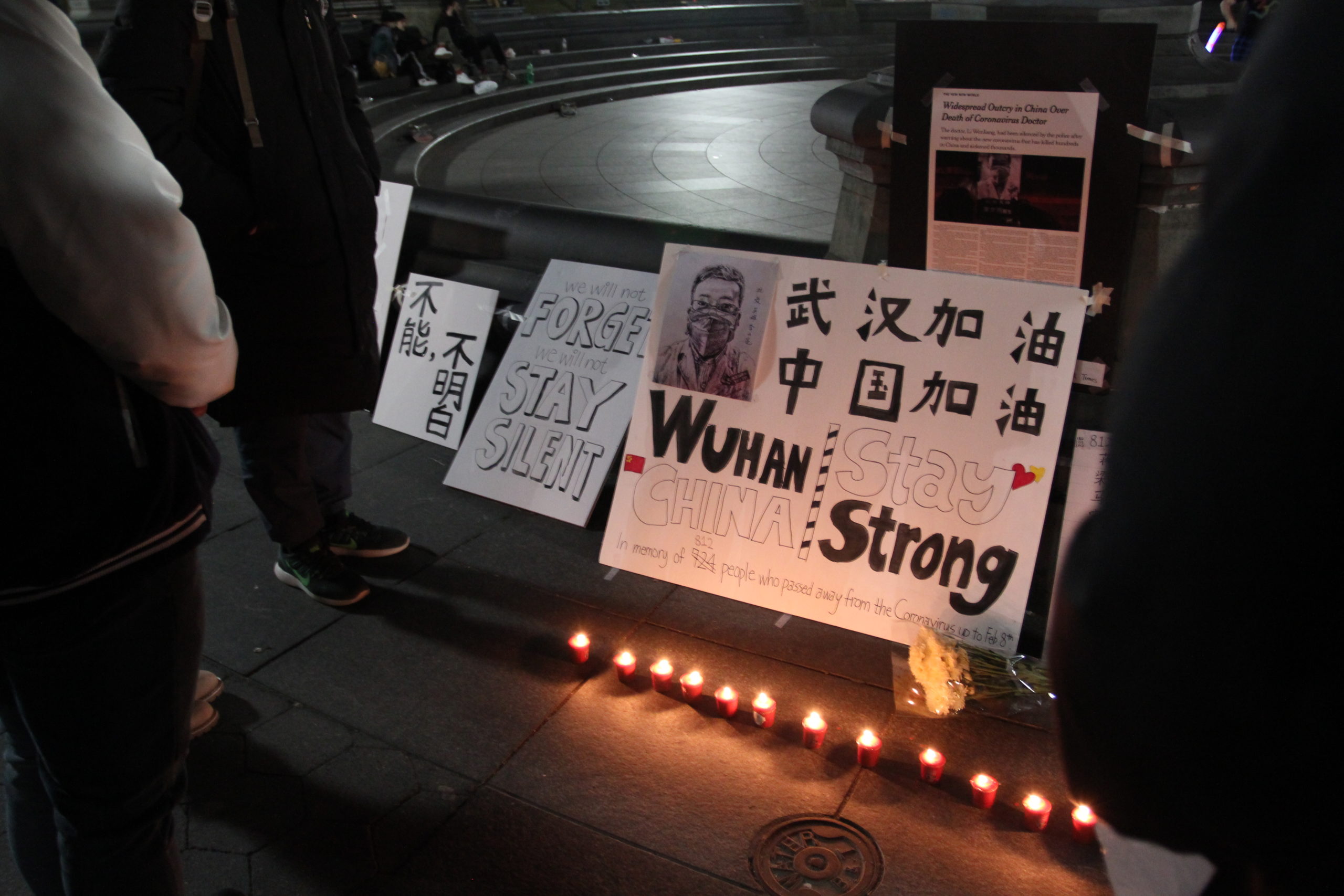
03.11.20
Mayor Bill de Blasio
“If you’re not sick, you should be going about your life.”
![]()
Street Vendors Try to Protect Themselves
Coronavirus infection numbers continued to rise rapidly in New York City, intensifying the debate over who can get—and cannot–be tested for the potentially deadly virus. Some medical experts warned the city’s roughly 20,000 street vendors were at high risk of catching and transmitting the disease.
Tourists Brace for Impact
Vendors selling hats and T-shirts said they had baby wipes in their bags to use while they work, while tourists, weaving through the crowds with their suitcases, pulled down their surgical masks to take pictures. But for the most part, workers along Times Square said, everything seemed normal. Two young women working at the Strand Book Store kiosk in Times Square said that business had been the same over the last few months, and there was still a line at the TKTS booth Tuesday afternoon.
03.15.20
Dr. Anthony Fauci
“The worst is, yes, ahead for us. It is how we respond to that challenge that’s going to determine what the ultimate endpoint is going to be.”
![]()
NYC Cases, Hospitalizations & Deaths
THE SHUTDOWN
The Shutdown

03.17.20
923 cases
10 deaths
![]()
As the number of cases in New York escalated and the gravity of the situation struck the city, schools and non-essential businesses—from restaurants to theaters—were forced to shutter. Social distancing, local officials said, would be the key to flattening the curve.
Covid-19 Cases
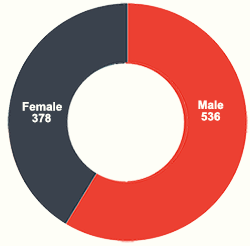
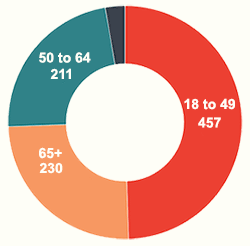
Restaurants and Bars Close
New York City’s restaurants and bars will shut down to help combat coronavirus spread, Mayor Bill de Blasio announced Sunday evening. “Our lives are all changing in ways that were unimaginable just a week ago,” de Blasio said in a statement. “This is not a decision I make lightly. These places are part of the heart and soul of our city.”
Public Schools Shut Down
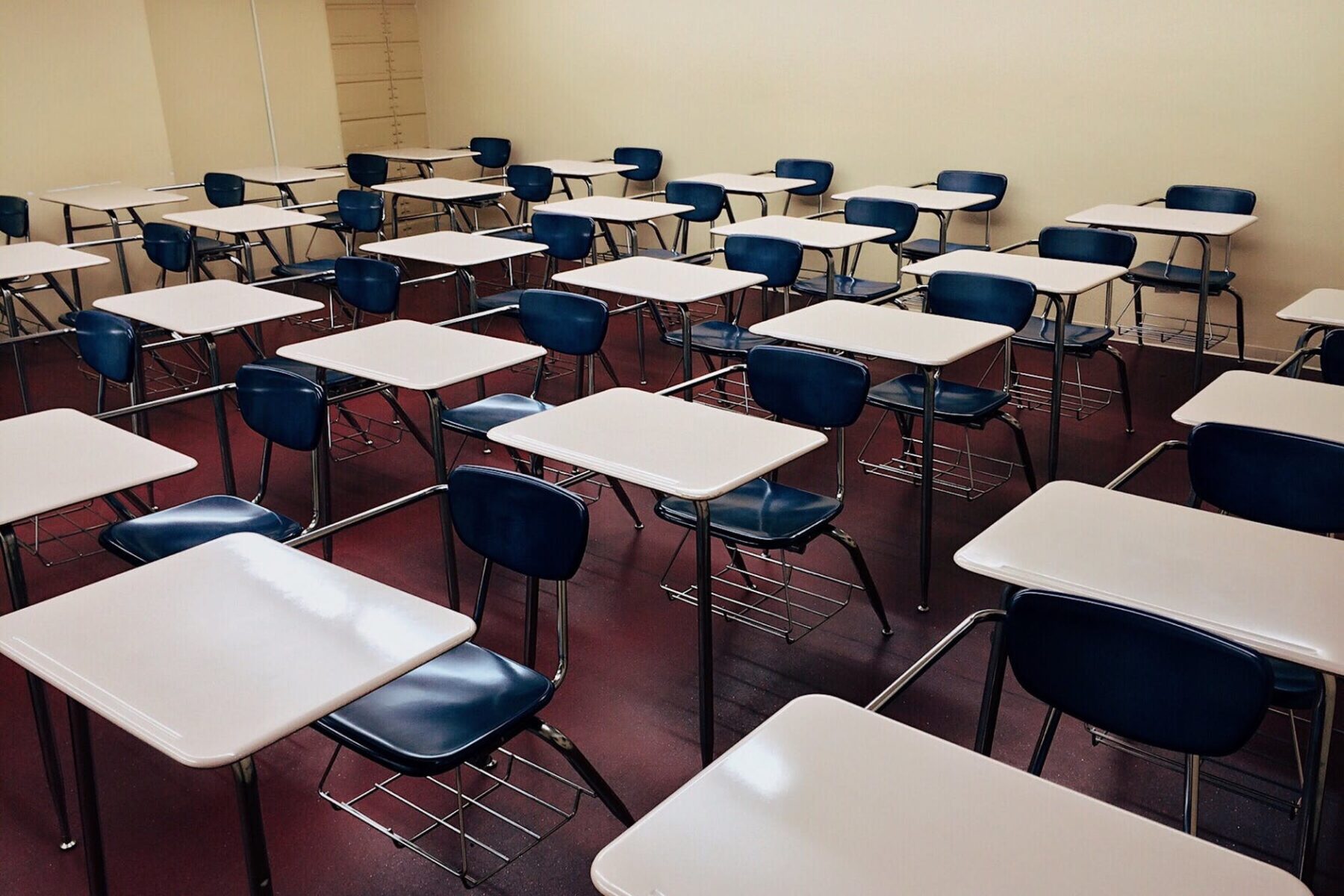
Public schools in New York City will close on Monday, March 16, to fight the spread of the coronavirus, Mayor Bill de Blasio announced on Sunday afternoon, after facing mounting pressure from the teachers union and the city council. “This is not something in a million years I could have imagined having to do,” said Mayor de Blasio. “But we’re dealing with a challenge and a crisis that we have never seen in our lifetimes.” The decision to close 1,800 schools from Monday through at least April 20 was the most dramatic measure the city took so far to combat the spread of COVID-19 in New York, where there were 329 confirmed cases and five related deaths as of March 15.
“Our lives are all changing in ways that were unimaginable just a week ago.”

Curtains Close on Broadway
Broadway theaters shuttered Thursday evening, March 12, as the coronavirus outbreak escalated in New York. Mayor Bill de Blasio declared a state of emergency for the city and Governor Andrew Cuomo announced a ban on gatherings of more than 500 people, which went into place that same day for theaters. “I understand that it’s for everybody’s safety. It’s a lot of people packed into a single space. I just wish I found out sooner,” said Sela Moy, 18. She had purchased her tickets a month earlier and had just arrived that morning from Chicago just to watch the “Mean Girls” musical.
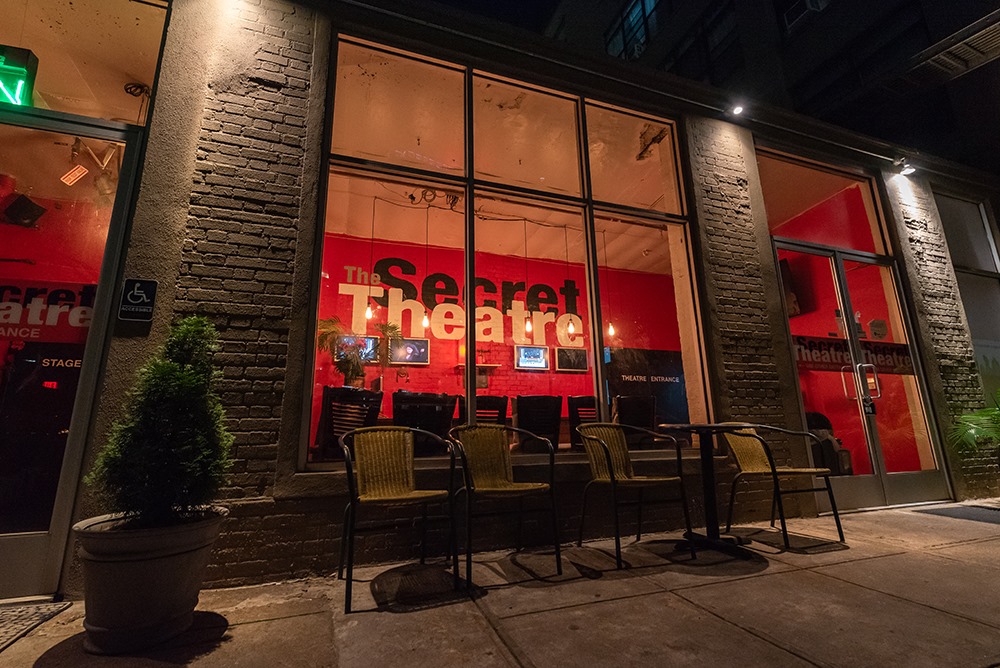
Independent Theatres Fear They Won’t Survive Shutdown
In a good year, the Secret Theatre in Long Island City, a small nonprofit theater, operates on razor-thin margins. The playhouse relies heavily on local businesses to remain afloat. It’s worked, for the most part. Now, however, the coronavirus shutdown could drive the theater to shut its doors for good. Like the Secret Theater, almost all of the city’s small theaters are nonprofits that operate on annual budgets of a few hundred thousand dollars. COVID-19 has closed down Broadway, and Off-Broadway shows, raising fears of millions of dollars in losses. For small theater companies, however, the coronavirus crisis could be a death knell. Members of the city’s theater community warn it poses an existential threat to the tiny theaters that New Yorkers love to attend. “This is cultural damage at a massive scale, and culture keeps us sane,” said Richard Mazda, founder and artistic director of The Secret Theatre.
03.30.20
Gov. Andrew Cuomo
“This virus does not discriminate. It attacks everyone. And it attacks everywhere.”
![]()
NYC Cases, Hospitalizations & Deaths
THE STORM
The Storm

04.06.20
68,776 cases
2,738 deaths
![]()
New York City quickly became the nation’s epicenter of the coronavirus pandemic, as doctors and nurses were called to the frontlines to battle the alarming spike in cases. And while healthcare workers scrambled to keep up in the city’s hospitals, food delivery, grocery store, and MTA workers continued to also risk their own health to keep the city running.
COVID-19 cases
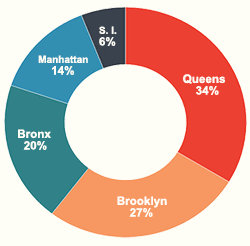
COVID-19 deaths

The USNS Comfort Docks
Some help is on the way. The USNS Comfort, a Navy hospital ship, arrived in New York Harbor on Monday with 1,000 badly needed beds to support the city’s stressed healthcare system. The ship began taking patients the next day. As the number of coronavirus patients continued to rise in New York City, the Comfort was to serve as a referral hospital for patients not infected with COVID-19 by providing full-spectrum medical care, including general surgeries.
Frontline Workers Battle Against COVID-19
From emergency room doctors to paramedics to drive-through testing site workers, those on the frontlines geared up every day to battle the virus and keep the public safe as best they can. Here are a few of their stories about what it feels to be inside the COVID-19 pandemic:
Nurses Missing Protective Masks
Nurses treating COVID-19 patients throughout many of the city’s hospitals reported that they didn’t have enough protective gear. As the virus continued to spread through the city, Gov. Andrew Cuomo announced that more personal protective gear, including masks, is on the way. For anxious nurses, the relief can’t come soon enough. According to one nurse at New York-Presbyterian Weill-Cornell, for example, nurses at the hospital were instructed to sign a sheet after they received a single n95 mask in a paper bag.
They were then required to reuse the mask indefinitely. “We have to save the mask, not throw it out. Use it day after day. Because apparently we’re not getting another one,” the nurse said. “They’re saying it’s going to peak in April and May,” the New York-Presbyterian Weill-Cornell nurse said, “and I’m so nervous because I don’t want to bring anything home to my father.” She lives with her family in their Queens home where her father is recovering from cancer. “It’s my biggest concern every single day.”
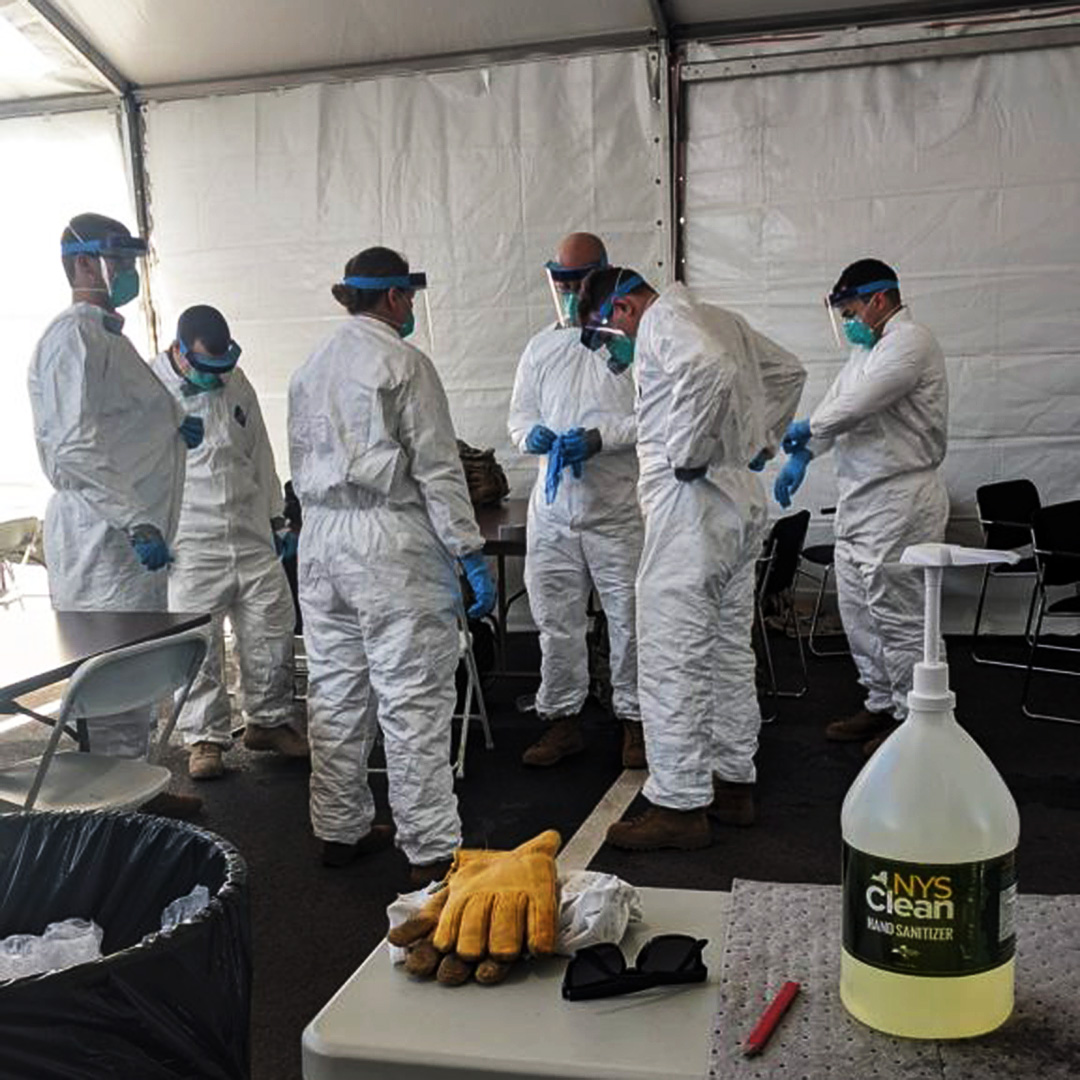
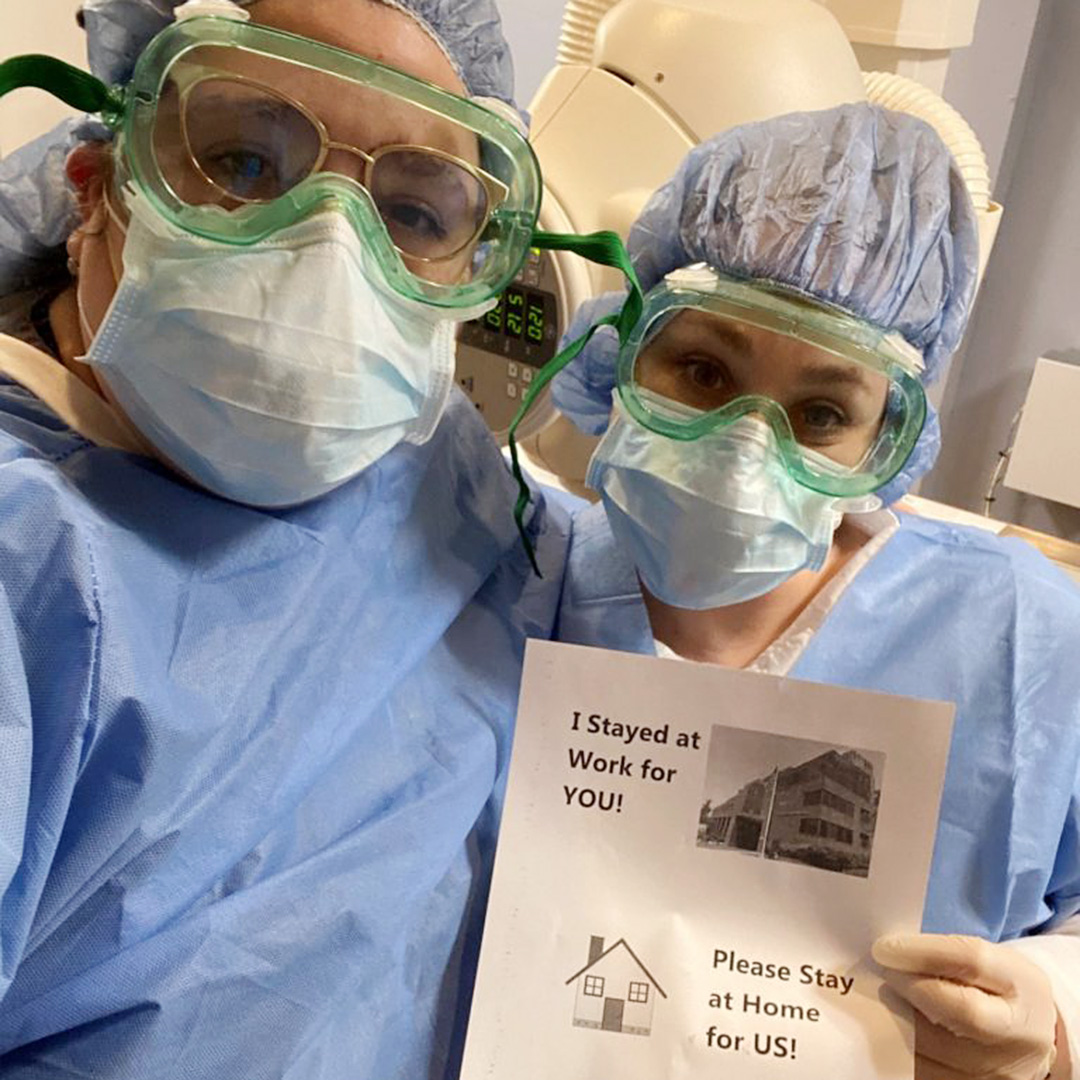

The Fears of Home Healthcare Workers
The Honduran native is up before the sun and gets ready for work. Six days a week, her mornings are exactly the same, even now in the time of COVID-19. She rides the 6 train from her home in the Bronx to the 103rd Street stop and then walks another two blocks to her workplace. At work, her companion is a 71-year old woman suffering from kidney failure. Taking care of her companion is her job. A mother of five and a grandmother of five, this woman, who does not want to reveal her name because she is an undocumented immigrant, is good at providing care.
Gov. Andrew Cuomo mandated New Yorkers in non-essential jobs to stay home two weeks ago, but home healthcare workers are considered essential, so she keeps showing up to tend to her patient on the Upper West Side, every day. The Honduran-born woman is one of 191,820 home health care workers in New York State, who are mandated to continue working as an essential workforce. And she is afraid.
Reduced MTA Service, Crowded Cars
With the coronavirus pandemic in full swing, the Metropolitan Transit Authority — including the New York City subway and buses, Staten Island Railway, Metro-North Railroad, and Long Island Rail Road — announced a shift to an “Essential Service” schedule, a reduction of midday service with the promise to maintain full rush hour travel. “The MTA is committed to getting the heroes who keep this city moving where they need to go,” Patrick Foye, the MTA’s Chairman and CEO, said in a statement on March 24. The restrictions to the city’s transportation network are similar to a weekend schedule.
Tight embraces, hand holding, and intimate gatherings to celebrate a life well lived have always been standard practices in the funeral industry. But in the age of COVID-19, such ceremonial rituals can’t exist in tandem with social distancing protocol. As the death toll neared 2,000 in New York State alone, the governor’s office instructed funeral directors to limit wakes and funeral gatherings to as few immediate family members as possible. All funerals must now be private. “Being a funeral director, it truly is a calling and our ability to be there for family during their most difficult time in their life. And not being able to hold someone’s hand or to provide a caring shoulder or a hug during a very emotional time is difficult for us,” said NYC funeral director, William “Bill” Villanova.
“Not being able to hold someone’s hand, a caring shoulder or a hug during a very emotional time is difficult for us.”

Cleaning Up After The Coronavirus
Scott Vogel spends much of his time cleaning up after death—suicides, homicides, and industrial accidents, as well as more common hazards like mold or animal infestations. But now, he’s busy cleaning up after the coronavirus, technically known as SARS-CoV-2. “We have completed over 200 jobs in the last month. Most of those jobs consist of confirmed cases from government facilities and essential personnel work places. The first two weeks of March, we had a lot of calls. Oh my God, we were running five people on the phones every single day,” Vogel said.
Post Office in Peril
During a time in which the postal service has never been more essential, workers have never been in more physical danger or their financial future as tenuous. The COVID-19 pandemic has exposed postal carriers, mail clerks, and craftsmen to acute threat levels while performing their assigned duties. Across the country, thousands of postal workers report to work each day with the knowledge that the virus can remain for hours on the paper and cardboard that comprises most mail.
04.08.20
Gov. Andrew Cuomo
“I don’t think we return to normal. I don’t think we return to yesterday. I think If we are smart, we achieve a new normal.”
![]()
NYC Cases, Hospitalizations & Deaths
THE PLATEAU
The Plateau
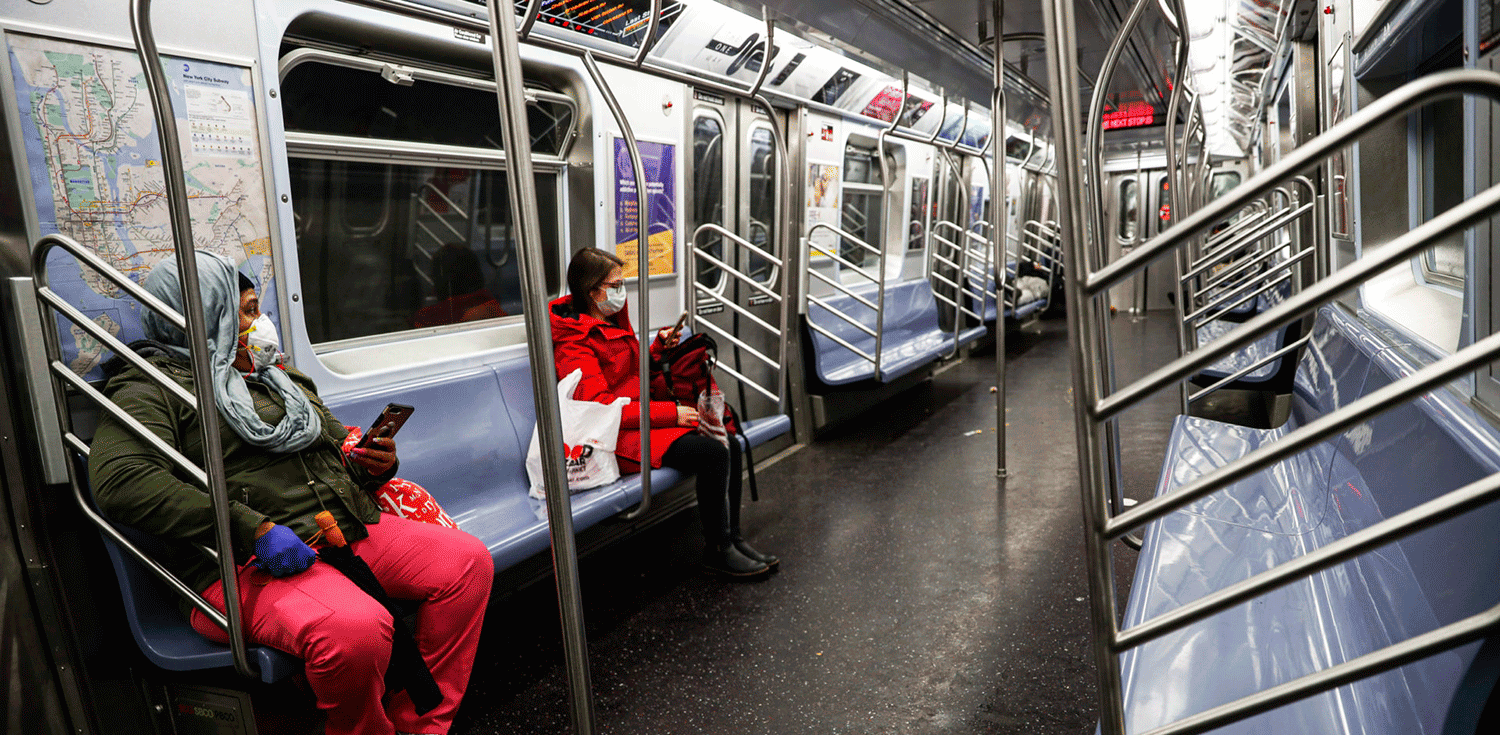
04.12.20
104,410 confirmed cases
6,182 confirmed deaths
![]()
Masks and Lysol wipes became a part of our daily routine, and New Yorkers adjusted to life under lockdown. Zoom became a new household word. From food and healthcare to education and work, people turned to creative solutions to make the best of what they had.
COVID-19 cases
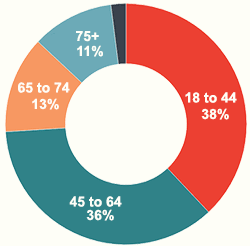
COVID-19 Deaths
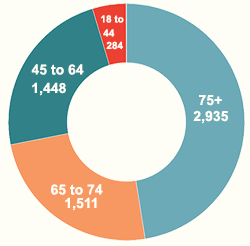
The Virtual Teaching Experience
City public schools closed due to the coronavirus on March 18. More than 1 million students attended class remotely and, as Mayor Bill de Blasio announced April 10, will likely continue to do so for the rest of the academic year. Governor Andrew Cuomo was less certain, so who knows, but as of mid-April more than 75,000 teachers in the five boroughs were working from home. “This has taught me to be more flexible,” one Brooklyn teacher said. “It is OK if they send their work at 11 p.m. because what matters to me at this point is knowing that they are doing their work. Every kid has a different circumstance at home.”
New Yorkers Adjust to Working from Home
With coronavirus cases in the city rising daily, companies started telling their employees to stay home. Here’s how some workers are dealing with being told to “work from home.”
After more than 30 years of bringing fresh ingredients to chefs at high-end restaurants in Manhattan from farms in the Hudson Valley, Jan Greer and Michael Kokas, a husband and wife produce-delivery duo, have had to pivot. No longer do upscale restaurants require the giant butternut squashes and crisp winter radishes they provided.
“We’re just trying to pay our bills here and help people out.”
“We woke up like everybody else and our world had changed,” Greer says. Seemingly overnight, coronavirus had altered an entire industry. Restaurants were shutting down or going to take-out only, seriously impacting the deliveries Kokas and Greer made through their business, Upstate Farms. But Kokas came up with a plan: deliver the fresh produce directly to New Yorkers.

Lonely in Lockdown
It’s 8 p.m. on a Tuesday night and college and graduate students calling themselves “Zoomers,” a Gen Z play on the name “Boomers,” flood into an app called Glimpse, which pairs strangers randomly for two-minute conversations. The Facebook event “Ok zoomer, speed dating iv,” advertises Glimpse’s fourth round of “speed dating,” which started on March 19th. The majority of attendees belong to a Facebook group, “Zoom Memes for Self-Quaranteens,” where the 21-year-old Glimpse co-founders Helena Merk and Brian Li have been advertising the events as ways to alleviate loneliness and boredom for students during quarantine. “Texting someone just isn’t cutting it anymore,” Merk says. “The loneliness that people feel right now is a magnification of what they feel normally.” In the time of coronavirus, that assessment couldn’t be more true, timely, or relevant.
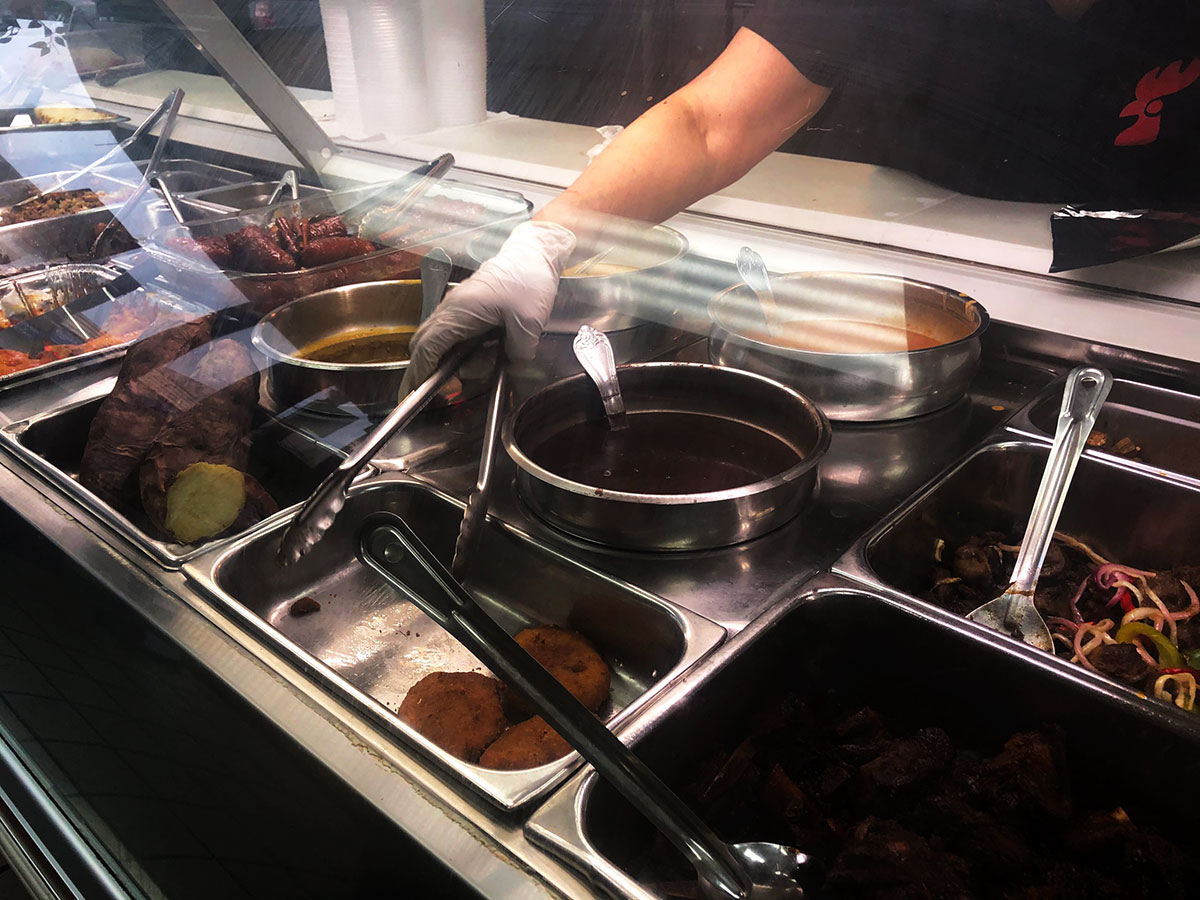
Fear of Infection Increases With Every Order
For the past two weeks, restaurants in New York City have only been open for takeout and delivery due to the COVID-19 pandemic crisis. The number of employees is at a minimum, but the amount of work has increased, say many workers, as the demand for delivery is very high.
To those on the frontline preparing food in the nation’s largest coronavirus hotspot of, the concerns about getting infected increase with every order. It is no different at one Dominican restaurant in Washington Heights, where the manager, Katherine Mercedes, worries about her safety in the eatery, and where the number of workers has gone down from 12 to four people to man a 10-hour shift, and where each employee now works only four days a week.
Mercedes is just one of the many employees working scared in the 59 restaurants that are still open for business in the Washington Heights and Inwood community, but many restaurant owners throughout the city have already closed their doors completely.
Brooklyn Soup Kitchen Helps Fight Hunger
On a normal day, the large and brightly lit cafeteria at St. John’s Bread and Life bustles with people, who sit at round tables and enjoy their freshly cooked meals. At breakfast, there might be scrambled eggs, bacon, and pancakes, and at lunchtime, chicken and fries. But these are not normal days. Over the past few weeks, the only signs of life at the Brooklyn soup kitchen have been the dedicated staff members as they cook and package the meals for pick-up.
St. John’s Bread and Life is just one of the few food pantries and soup kitchens left open in New York City. Nearly one-third of all food pantries in the city have closed as they struggled to feed the growing number of unemployed New Yorkers during the ongoing COVID-19 pandemic. Despite the grim outlook, the staff members at St. John’s Bread and Life are determined to continue their mission to serve New Yorkers in need.“We have to do what we got to do,” said Mildred Gutierrez, who’s been working there for 17 years.
A Taqueria Lends a Hand
“As a lifelong New Yorker, you do what you can. We all seem to pull together.”
In New York, 18 percent of children suffer from food insecurity, according to a 2018 Hunger Free America report. That means that nearly one in five students rely on school-sponsored meals—sometimes both breakfast and lunch— to make it through the day. And with about 1.1 million schoolchildren normally attending public schools in New York City, the task of feeding those among them who are hungry seems monumental when the schools are closed.
At the end of March, a chain of 10 Oaxaca Taqueria restaurants around Manhattan and Brooklyn began handing out free lunches to schoolchildren on weekdays, to combat the food insecurity caused by school closures in a city besieged by coronavirus. From 12 p.m. to 2 p.m., workers took orders from hungry kids, preparing to-go boxes filled with rice, beans, chicken, tortillas, and even a vegetarian protein option.
A Married Couple Helps Food Pantries Make Special Deliveries
At a time when many people who need help from food pantries cannot leave their homes, an army of volunteers has risen up to help with home deliveries. Among those volunteers are Frank and Maureen Regan. The Queens couple goes door to door in the epicenter of New York’s outbreak, despite being grandparents.
The Digital Doctor Is In
Anne Sansevero saw it coming. As the first cases of COVID-19 began surfacing in America, Sansevero, who has been a geriatric nurse practitioner for more than 30 years and runs a private practice serving seniors, foresaw that her elderly clients—one of the populations most vulnerable to the contagious virus—would particularly be at risk.
“I knew we were in trouble,” she said.
Normally, care managers like Sansevero regularly check in with their senior clients, many of whom live alone or suffer from mental or physical disabilities, often dropping by their homes for a visit every week, or every month, depending. But as local governments began to enact social distancing measures to prevent the spread of the coronavirus, health care specialists were forced to re-strategize, and many of them have increasingly turned toward telemedicine to consult with patients.
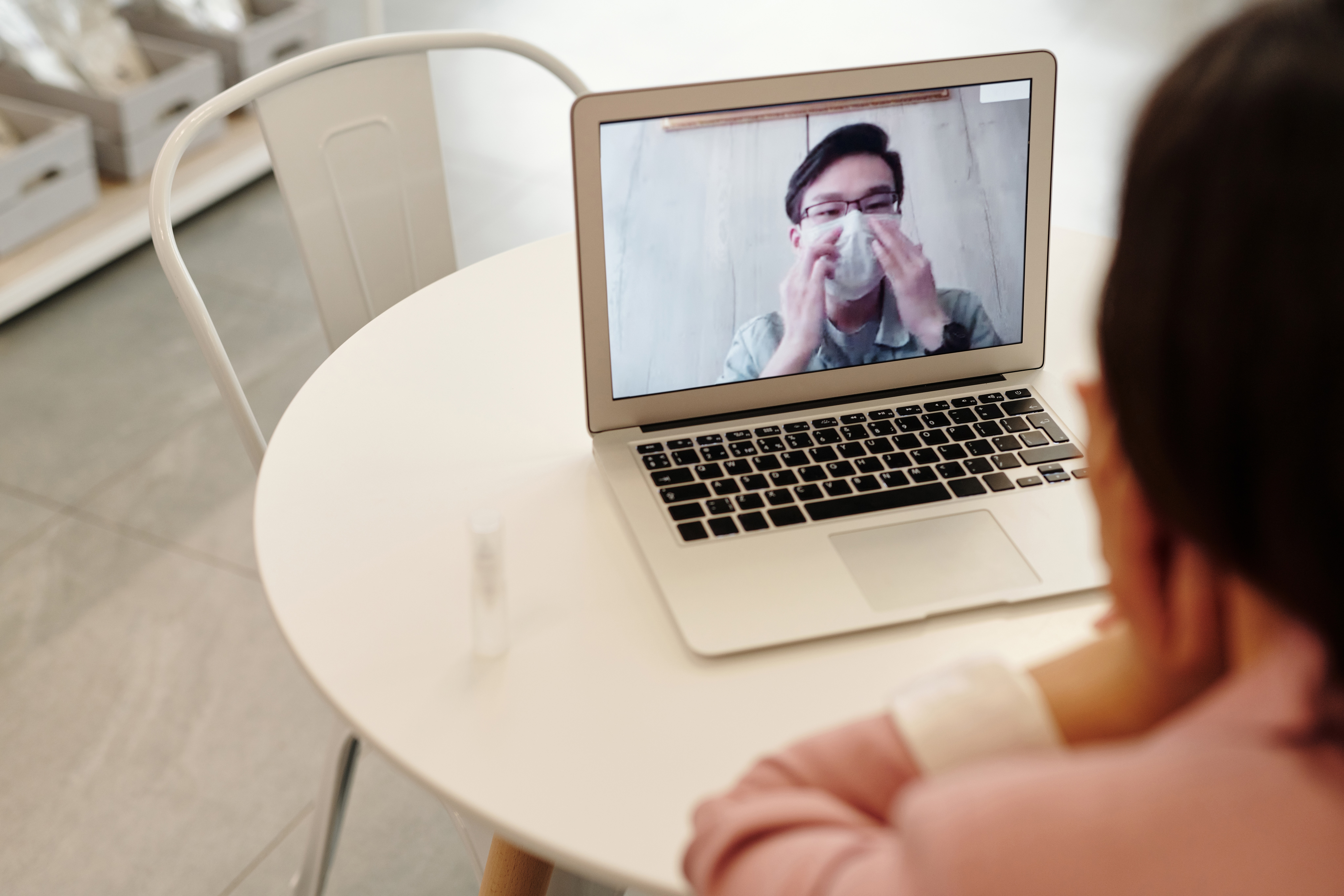
A 3D Printing Army Helps Healthcare Workers
A Brooklyn teen, Karina Popovich, is helping healthcare workers on the frontlines of COVID-19 to protect themselves. As the coronavirus pandemic hit New York City, Karina decided to produce personal protective equipment with her 3D Printing skills. She soon found more than 200 other people all over the world who wanted to join the force to help. They formed “Makers for COVID-19,” a coalition that produces and donates equipment to medical professionals directly. They make a combination of 20,000 masks, shields, and ear protectors for more than 30 hospitals each week.
04.15.20
Gov. Andrew Cuomo
“If we don’t learn the lessons from this situation, then all of this will have been in vain. We learned a lot if we’re willing to open our eyes and open our ears.”
![]()
NYC Cases, Hospitalizations & Deaths
The Rainbow
The Rainbow
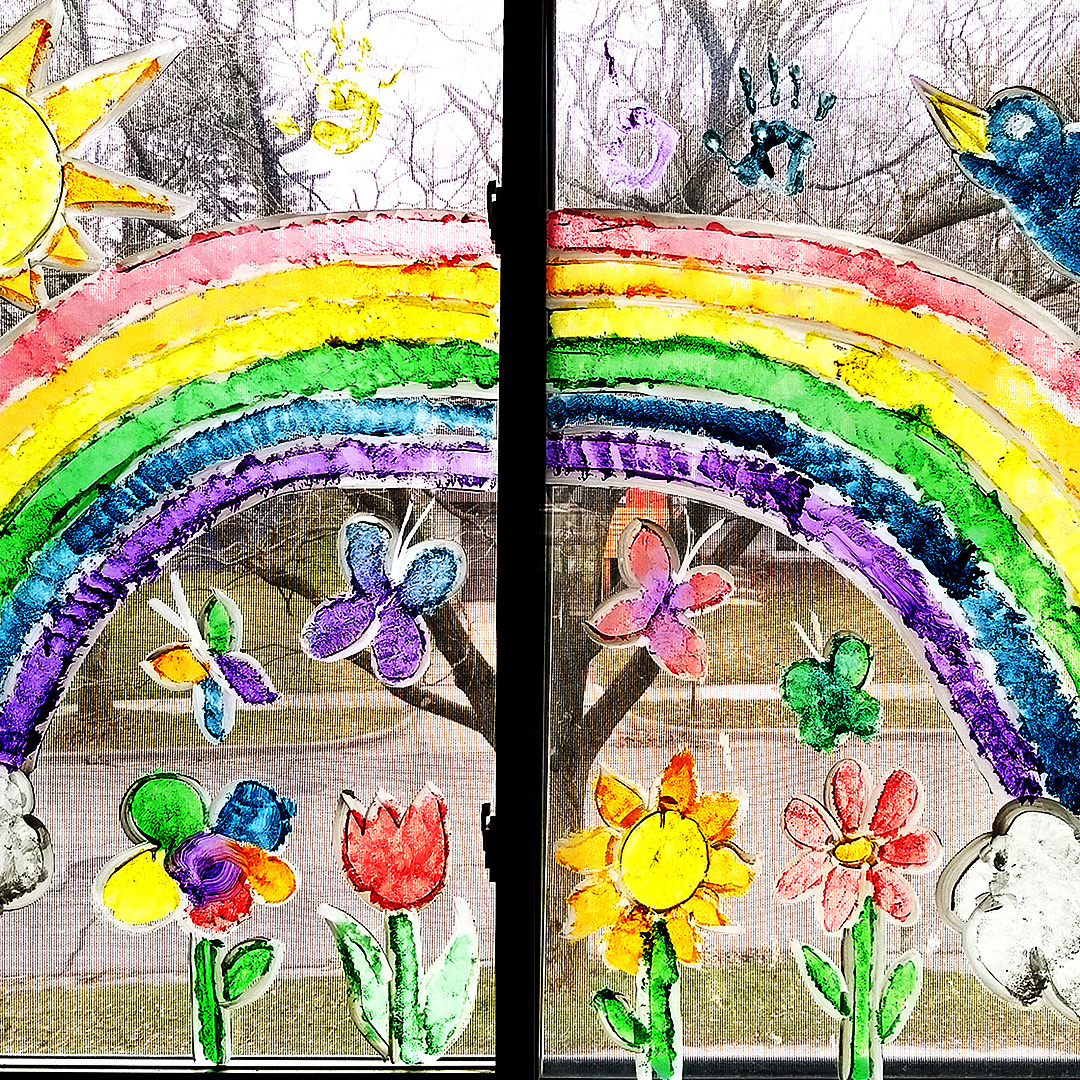
04.25.20
153,204 confirmed cases
11,460 confirmed, 5,213 probable deaths
![]()
As the city continued to weather the pandemic storm, people found ways to continue connecting with their communities and to celebrate—even from six feet, or thousands of miles—apart. It’s a reminder that there’s always a silver lining, so long as you know where to look.
COVID-19 cases
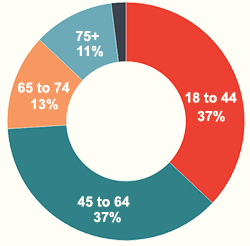
COVID-19 confirmed deaths
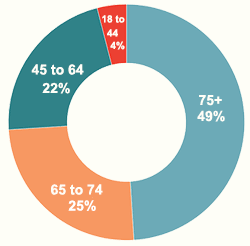
Stir-Fry Meals on Wheels
Homecrest Community Services, a non-profit organization that runs two centers for seniors in Brooklyn, shut down in March with the rest of the city to limit the spread of coronavirus. But Don Lee, the chairman, realized that many of the now homebound seniors, many of them Chinese, were unable to get food. So his team began to work with a restaurant to deliver more than 300 meals a day to seniors, highlighting a bond between volunteers and the seniors that has long been rooted in the Asian community. “We will definitely win this,” said a senior who received the meal. “God bless America. God bless New York.”
Social Posting in a Pandemic
Residents in Manhattan high-rises have found creative ways to communicate while they stay at home during the coronavirus outbreak, and some of them turned to sticking white Post-it notes on their windows. From simply saying “Hi” to a more emotional note like “Love Y’All,” these messages of humanity seem to have shrunk the distance between people.
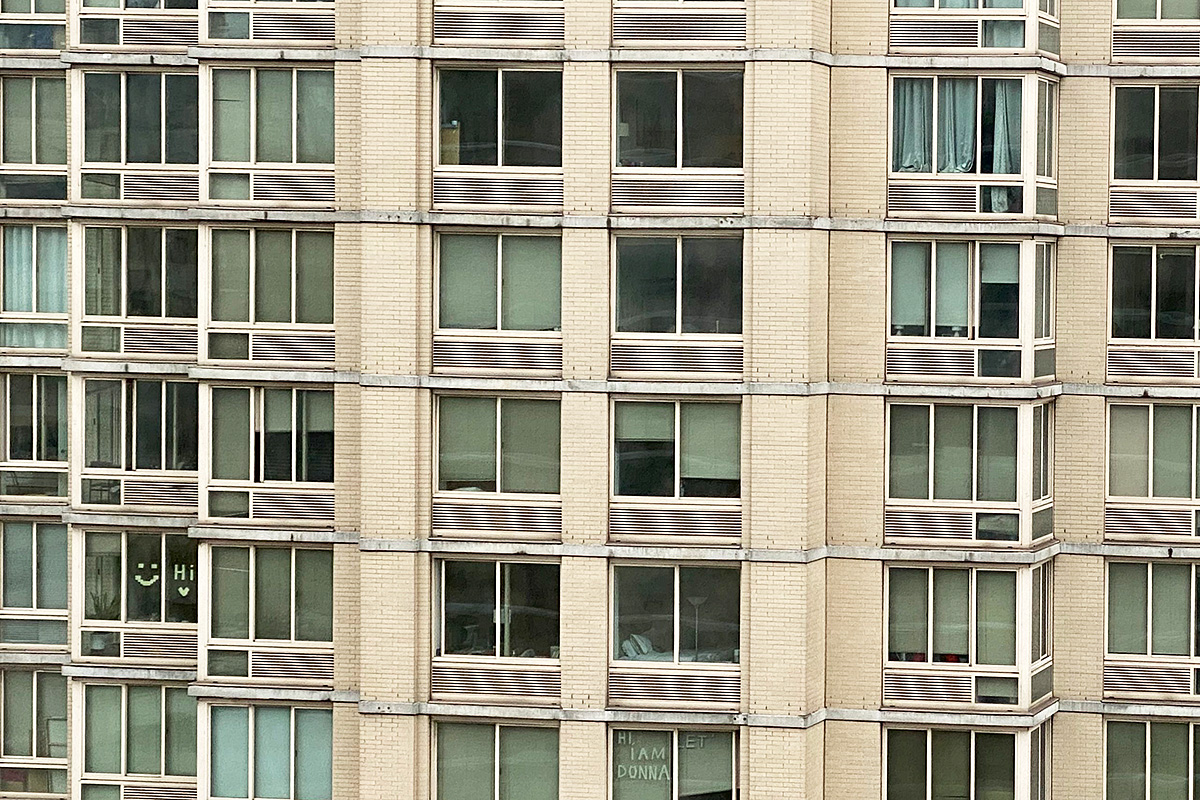
A Rainbow Connection
As COVID-19 continues to spread, families in Brooklyn also got creative to convey positive messages. They placed rainbow drawings and paintings in their windows, creating a makeshift I-Spy game for children in the neighborhood as social distancing became the new norm.

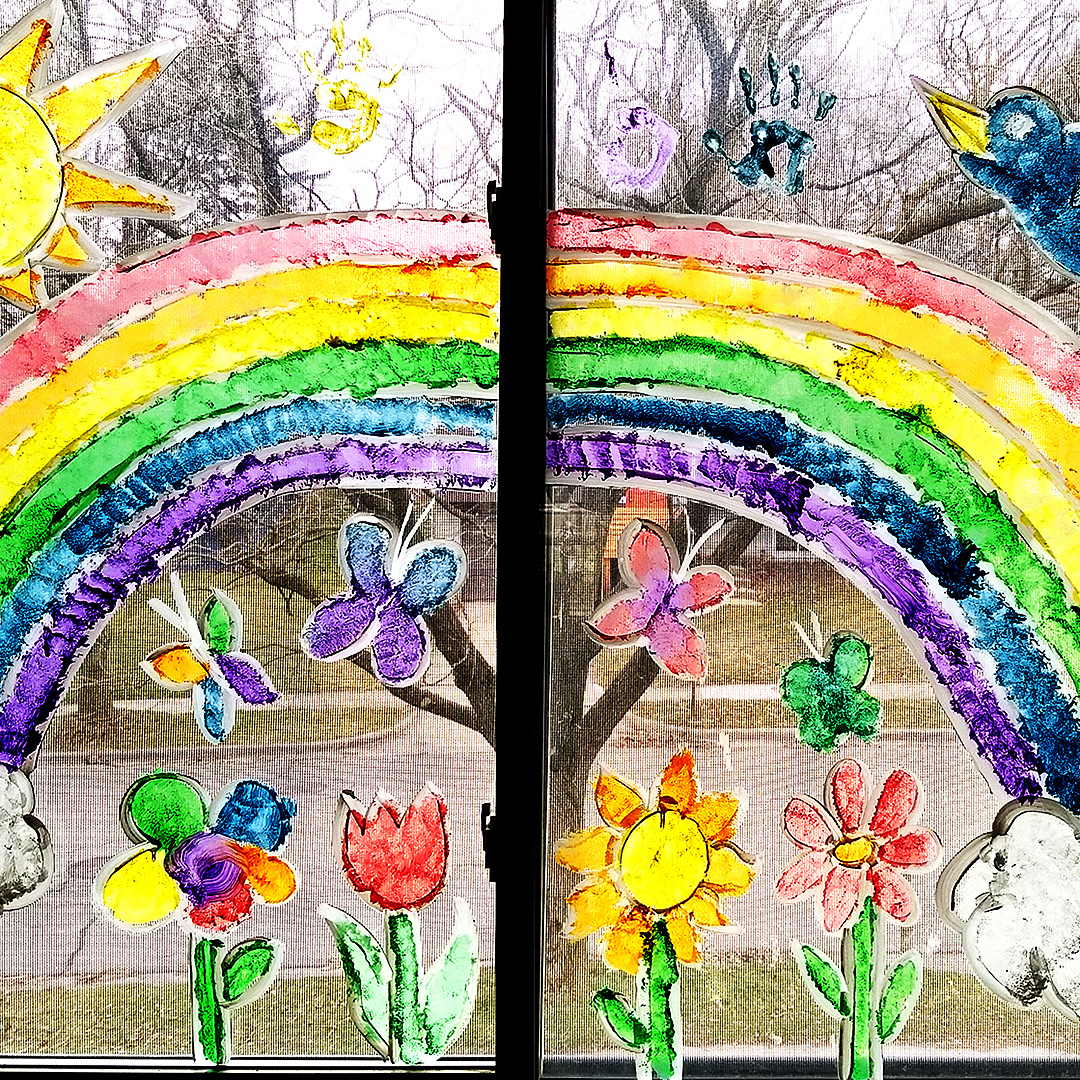
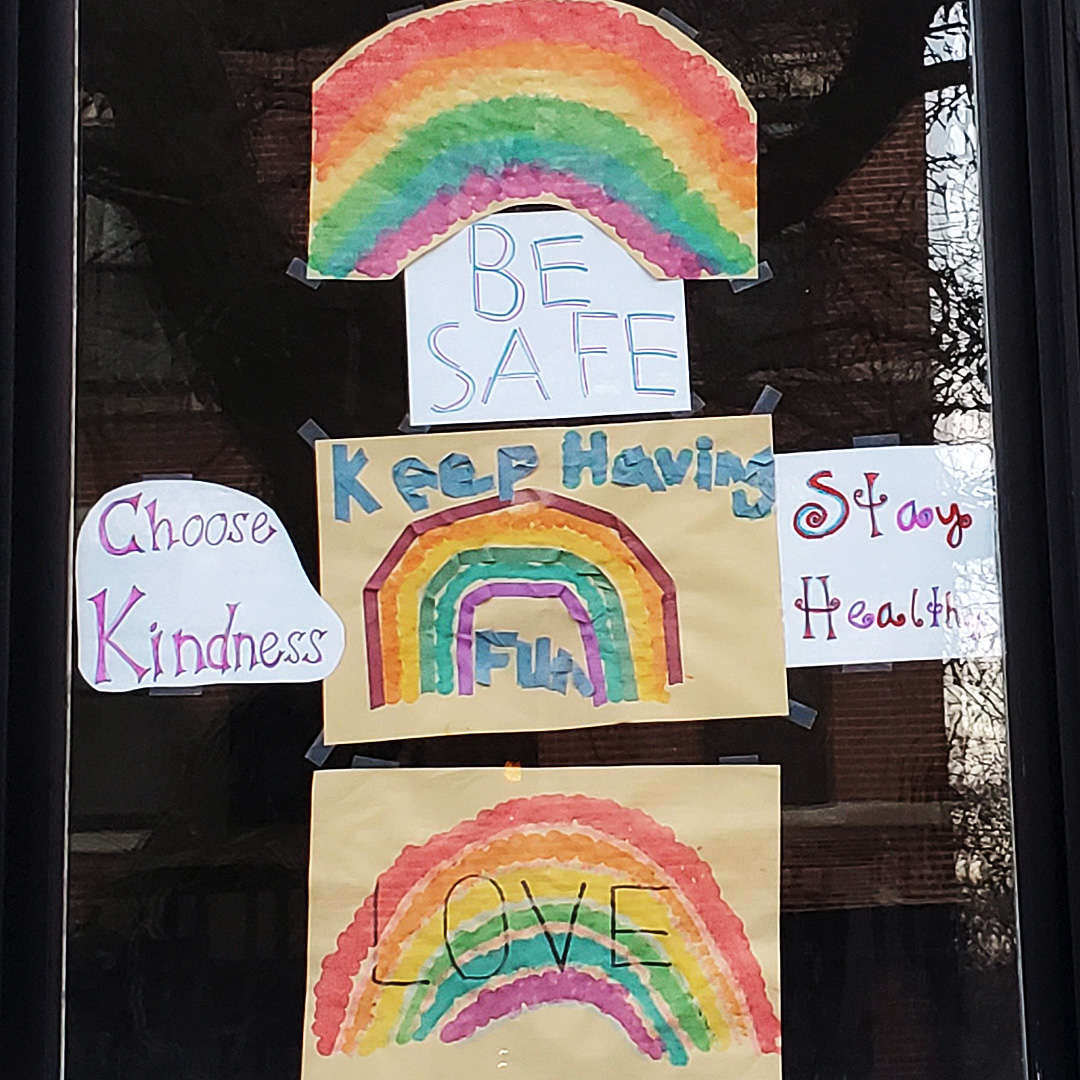
“We’re all in this together,” said Anna Grotzky, who created a Google map to trace the spread of what is now called the Quarantine Rainbow Connection Project. “And that’s kind of the beauty of this. We’re all sharing a lot of the same emotions, a lot of the same stresses, ups and downs, highs and lows. It doesn’t matter where we are in the world. That doesn’t happen very often.”
The City That Never Sleeps Won’t Stop Cheering
As the city creeps endless weeks of shelter in place orders and grim news cycle continue, New Yorkers’ spirits refuse to be crushed. Since the crisis broke out in mid-March, every night at 7 p.m. New Yorkers close computers, put down phones, and pause dinner preparations to lean out their windows, step out on their balconies or stoops, and cheer. There are whoops and yells, claps and whistles, cowbells and makeshift cowbells created from pots and pans. Car horns blare. The cheers are intended as a thank you to essential workers, but they have also become a chance for New Yorkers to connect with one another, to say, “We’re here! We survived another day!”
Cheering in Manhattan
Cheering in Queens
A Passover in Quarantine
In the age of coronavirus, people are reconstructing and reconfiguring the events that traditionally mark each year the best they can, from birthdays to anniversaries to religious holidays, including Passover. This year, as most Americans are home in isolation, many Seders across the country went virtual.


“This night was different because it was my grandfather’s first time using Zoom; my niece took her first steps; my great aunt was able to join us from California having only to cross her living room as opposed to crossing the country; and we were able to include multiple time zones, generations, and countries in the power of a shared experience via technology,” said Jude Cohen with her family, in reflection of the virtual passover. “We end the Passover Seder every year reciting the words, ‘Next year in Jerusalem.’ Last night, we ended by saying. ‘Next year in Jerusalem. Or at least in person.’”
On Easter, People Worship Together Even When They’re Apart
This year on Easter Sunday, families gathered around the dining room table to enjoy a feast of slightly burnt bacon, pancakes, and fresh fruit. Instead of ties and high heels, worshippers wore tee shirts and workout clothes. The Cathedral of St. John the Divine streamed their service online, reminding people that they can celebrate together, no matter where they are.


“The apocalyptic passages we associate more with Advent seem to be happening before our eyes,” Bishop Andrew Dietsche said during the online service. “But we will also tell the stories of astonishing courage, and selfless service, and boundless generosity, and of sacrifices made for the common good.”
The Spanakopita Samaritan
Amid the coronavirus outbreak, restaurants in New York City are repurposing their kitchens to feed hospital workers on the frontlines. Since the state government ordered all non-essential businesses to close as of March 22, chef Maria Loi has put the kitchen at her eponymous Greek restaurant Loi Estiatorio to charitable use, preparing meals for healthcare workers battling COVID-19 at hospitals.
As of the date of publication, Loi had provided 250 individually packed containers of dolmades— stuffed grape leaves, spinach and cheese pies, and lemon potatoes to the staff at NYU Langone Health and Lenox Hill Hospital. Despite the long hours, with a typical day at the restaurant clocking in at 14 hours, and the potential health risks, Loi says it’s worth it.
“I Do,” on Screen
On the morning of April 18, Governor Andrew Cuomo issued an executive order permitting virtual weddings. Four hours after the order was issued, James Storr Brown and Saya Fukuda held a wedding on Zoom with 40 people attending. “It’s a really tough time. It’s the greatest test for us that you’re stuck in an apartment and you still want to get married,” said the bride Fukuda. “I think we can go through any tough time after this.”
Staten Island Strong: the Medical Mask Makers
More than 22,000 medical workers live on Staten Island, according to the New York State Comptroller in a 2018 report. Healthcare, in fact, is the largest category of private-sector employment on the island and, as the coronavirus pandemic intensifies, Staten Islanders rallied to help protect neighbors, friends, and family members. Lisa Signorile Zahakos, a former physician assistant, founded the Facebook group, “Sew Away Corona,” which sews fabric masks and donates them to New York City hospitals, to get them protective equipment.
“How do they expect this to ever go away if we don’t protect them?” she asked. “It’s my cousins in these hospitals, my family, my best friends. It really speaks to me. They are working 12-hour shifts and they are in hell. It’s the least we can do.” By the time of publication, her group of 1,300 people, half of whom are from Staten Island, had made more than 2,000 masks and has sent them to at least five hospitals in New York City.

05.08.20
Gov. Andrew Cuomo
“I think we have to learn from this, and unfortunately, you learn from it as we’re going through it because we may not have the luxury of time. If they are right on the speculation about a second wave in the fall or the winter. Well, we have to start getting ready now.”
![]()
NYC Cases, Hospitalizations & Deaths
THE IMPACT
The Impact
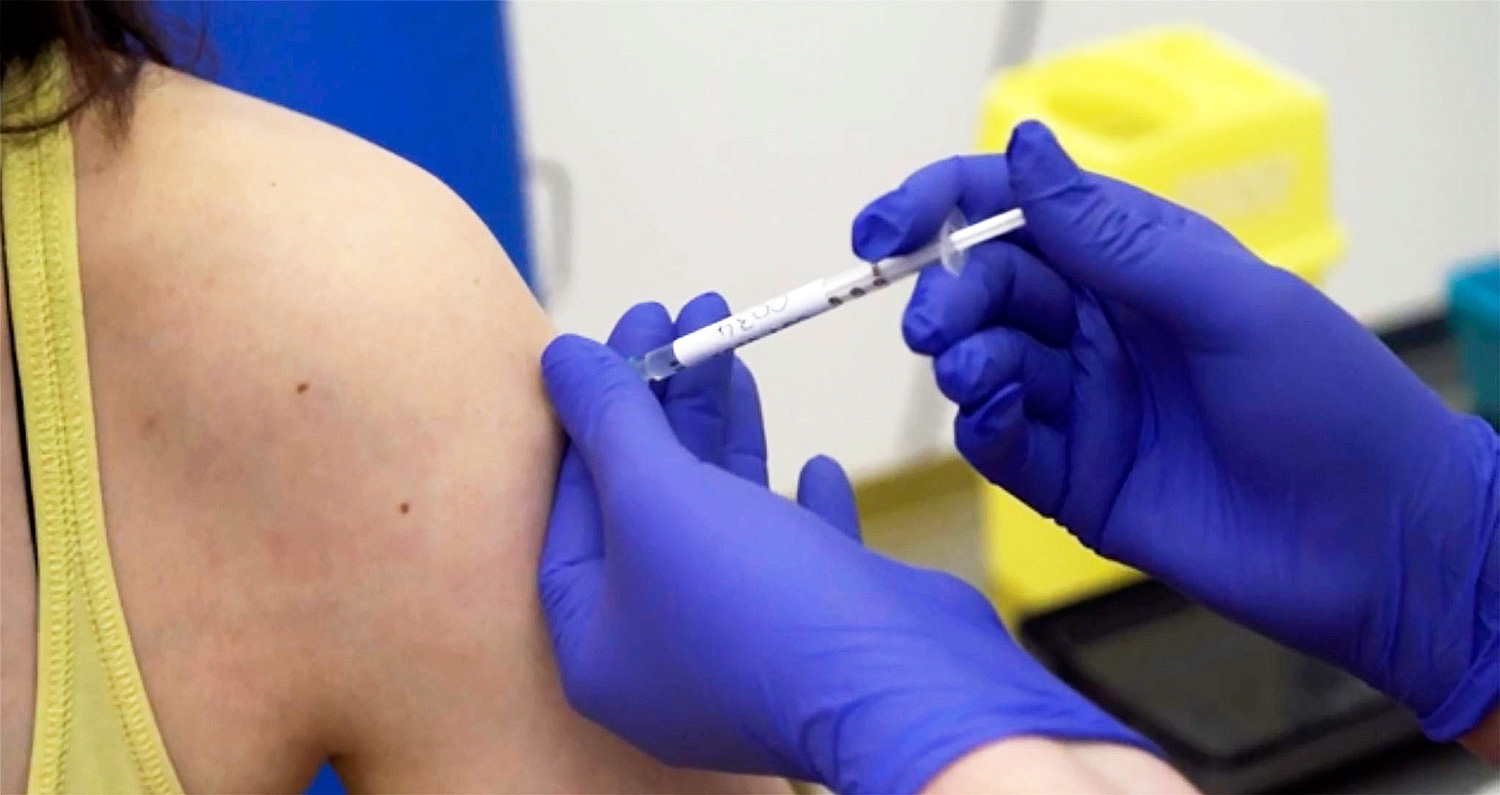
05.15.20
189,031 confirmed cases
15,756 confirmed, 4820 probable deaths
![]()
It’s no secret that the pandemic has infiltrated nearly every aspect of our lives. The reverberations are felt socially, culturally, and economically, and will continue to do so for a while yet.
COVID-19 deaths
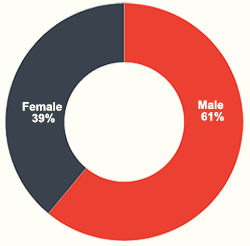
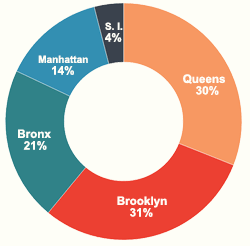
“These Patients are Alone”
For internal medicine doctors, the battle against COVID-19 is a long, taxing and mysterious experience. They struggle to help the sickest patients in the ICU whose lungs are failing and bodies are shutting down. Dr. Francesco Laterza, who works at Einstein Healthcare Network in Philadelphia, talks to NY City Lens about what it’s like treating a complicated virus.
“These patients are alone,” said Dr. Laterza. “Especially for the ones who die, they’re not surrounded by the people they love.”
The Contagion of Anti-Asian Discrimination
It would have been yet another unfortunate case of verbal harassment if not for the shadow of the pandemic that hung over the city, one that she could brush off and forget about, at least for the night. One evening in late February, Criss, who is Korean, was in Penn Station, weaving her way through the rush-hour crowd to the No. 1 train that would take her uptown, where she lived, when a man spun toward her.
“Yo, f-ck the Chinese,” he yelled. “Go back to your country! F-cking chinks.”
Asian-American discrimination and hate crimes have been on the rise since the beginning of the coronavirus outbreak, which some accuse China for starting. More than 30 percent of Americans have witnessed someone blaming Asian people for the coronavirus epidemic, according to a recent survey by the Center for Public Integrity. The anti-Asian rhetoric employed by people like the president, who has referred to the “Chinese virus” or “Wuhan virus,” perpetuates the fear and blame toward Asian populations, even as new research suggests that travelers to the United States most likely brought the virus mainly from Europe, not Asia.

The Korean Exodus
Armed with a plastic baggie of Lysol wipes, 50 pairs of nitrile gloves, and a travel-sized bottle of antiseptic spray, Sam Choi made his way to his airplane seat, careful to maintain a healthy distance from people around him. He saw other passengers in hazmat suits and what looked like diving goggles, and tried to take comfort in the fact that he, at least, had double-masked himself. The flight from JFK to Incheon International Airport would take 14 hours, and nobody was taking any chances.
Choi, 23, who arrived in Seoul at the end of last month, is one of the many Koreans who have left New York for the relative safety of their homes in South Korea, which is widely regarded as the paragon of efficient national response to the Covid-19 pandemic. Some, including students who were suddenly told to vacate their dormitories, fled the city because they had no other choice. Others, like Choi, elected to leave as the situation in New York City steadily worsened—often after a great deal of conflict and deliberation. Since March 29, the number of international arrivals has reached around 2,400 a day, according to Seoul city officials.
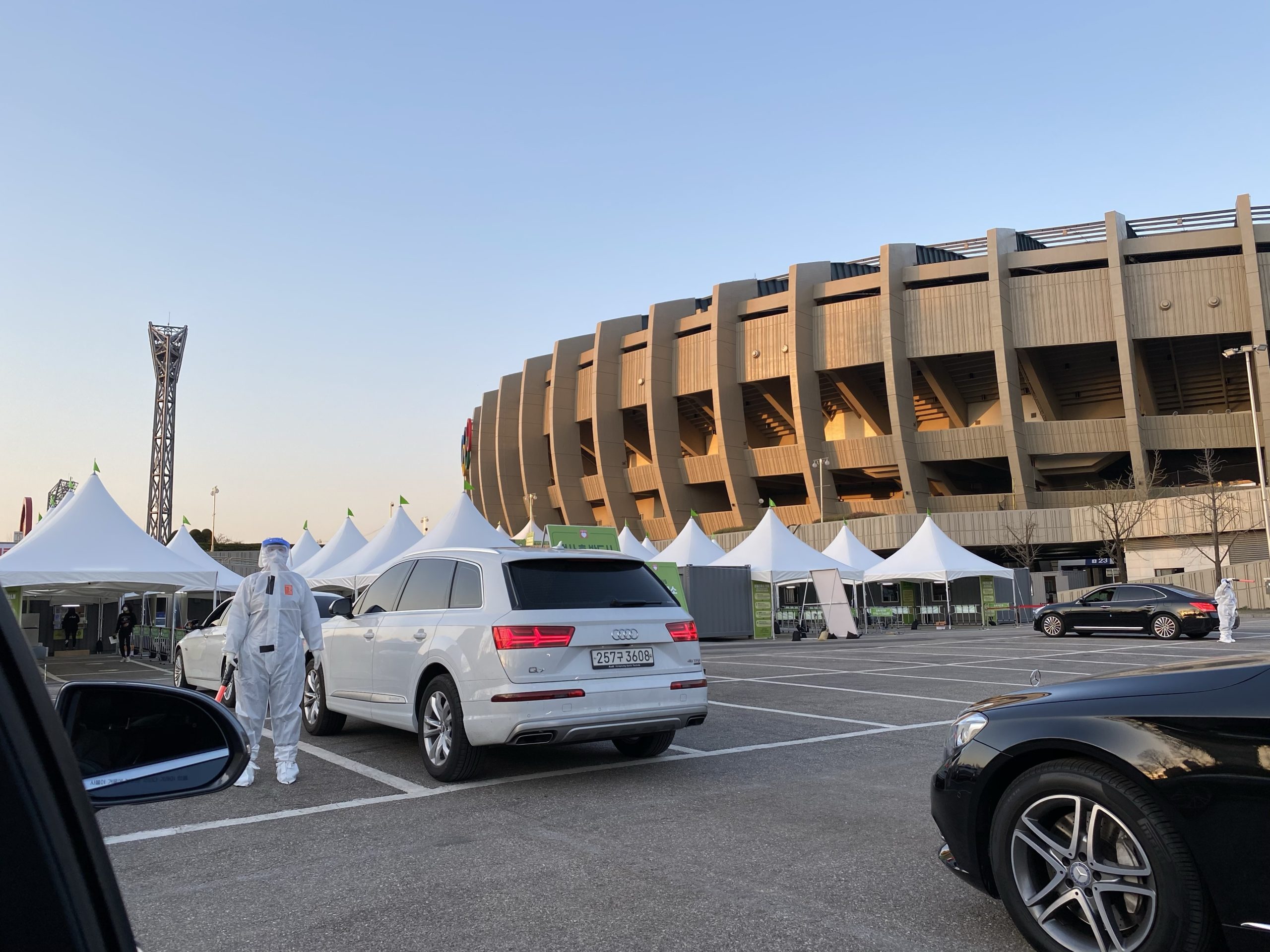
The Race to Find a Vaccine
As the pandemic rolls on, universities, biotech companies and pharmaceutical giants around the world are racing to find a coronavirus vaccine. Short of developing a successful drug treatment for COVID-19, finding a vaccine is the only path to a return to normalcy. Even though taking a vaccine from concept to delivery is a process that usually takes many years, sometimes over a decade, scientists are hopeful they can develop and distribute a coronavirus vaccine in two years or less. However, manufacturing and distribution may be an even bigger challenge.
Many New Yorkers spend their days doing all they can to avoid COVID-19. Some people in New York and across the county, however, have volunteered to willfully expose themselves—and potentially become infected with the virus—through so-called “human challenge trials” in hopes of contributing to the speedy development of a vaccine.
“I just want this to be solved already.”
“Saving just one day of not having this situation would be thousands or tens of thousands of lives saved, and three months would be an amazing achievement,” said Josh Morrison, who organized volunteers for the trials. “In New York, it’s been very depressing and very scary, so I feel like if I could actually do something useful to help fix this and stop this, I would.”
Suicide Hotlines Face a Surge
Many suicide and mental health hotlines in New York have seen a rise in the number of calls they receive since the pandemic hit. For instance, The National Alliance on Mental Health in New York has had a 60 percent increase in the number of calls to its helpline, according Matt Kudish, the group’s executive director.
NYC Well has received about 50 percent more calls, according to Kelly Clarke, director. And at the end of March, the newly founded New York State COVID-19 Emotional Support Hotline received more than 8,000 calls in five days. Experts are wary of predicting that suicide rates—given coronavirus fears, coupled with self isolation and economic uncertainty—could skyrocket.
The COVID-19 Economy
The pandemic has wreaked havoc on the economy, leaving millions of Americans out of a job. In just one month, unemployment has risen from historic lows to levels not seen since the Great Depression. Amid the economic fallout, some business leaders and politicians are eager to reopen the country as soon as possible — but at what cost? NYCityLens spoke to David Weil, an economist at Brown University, to understand the cost benefit analysis behind easing social distancing measures.
How Far Will $1,200 Go in New York City?
On March 27, President Trump signed a stimulus bill worth $2.2 trillion to aid business and individuals while the economy is shut down due to the coronavirus outbreak. Those who meet eligibility requirements — citizens or residents with a Social Security number who make less than $75,000 — are beginning to receive their Economic Impact Payments, $1,200 checks for each person (or $2,400 for married couples who filed taxes together). But with more than 22 million Americans filing for unemployment over March and April, the checks seem insufficient to make ends meet.
Brandon Munoz, 26, works as a freelance photographer in New York City. When coronavirus hit, jobs dried up and his savings began to dwindle. He spoke with NYCityLens about where his stimulus money will be going and how expensive it is to survive in the city.
Contact Tracing: A Double Edged Sword
Before New York can safely reopen, Governor Cuomo said the state will need almost 6,000 contact tracers to monitor the spread of coronavirus. New York City alone will require 2,500 tracers. Although necessary, some worry about the unintended invasion of privacy that comes with tracing. NYCityLens talked to an epidemiologist and a lawyer about the two sides of contact tracing.
Childbirth During a Pandemic
New York State already struggles with high maternal morbidity rates, as well as health disparities for women of color. The pandemic’s stresses on the system present an added hurdle. So the state is scrambling to find a way to safely and adequately care for expectant mothers. The proposed solution: additional birthing centers, set up around the city.

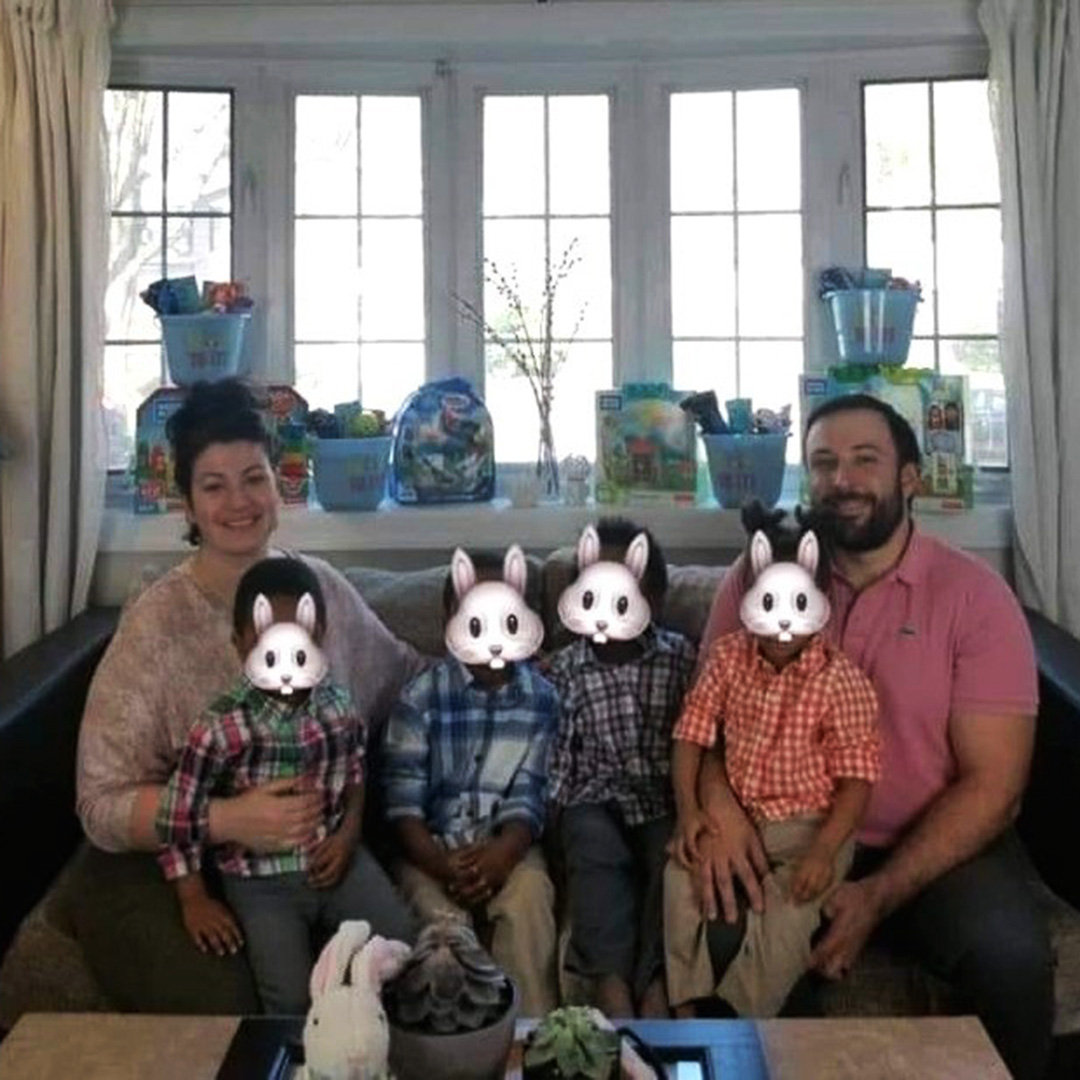
An Already Fragile Child Welfare System
Roman Prokopchuk and his wife, Lindsay, welcomed their most recent foster child three days before the nation went into shutdown due to COVID-19. With four foster children under the age of seven from three different biological families, the Prokopchuks have their hands—and house—full.
In the foster care system, every child is assigned their own caseworkers–someone whose job is to check in regularly to ensure the child’s safety, health, and general well-being. But now in the tri-state area, these in-person visits are made impossible by the pandemic. Instead, the meetings have gone virtual, which has caused challenges for some families.
Stuck Apart?
Social distancing has kept things, well… distant, even for some lovers. Lovers, some displaced across the five boroughs and others across continents, share the difficulties that come with romantic isolation—and offer up creative approaches to stay connected and keep love alive amid the pandemic.
The Class of 2024?
Like higher learning institutions in much of the rest of the nation, New York City’s universities have shifted online. Whether they will do so next year is unclear. So around the world, incoming freshmen to these universities are waiting for a decision. They have dreamed of a college life where social interaction overflows from night to day, over and over again, and of the vibrant city that could become their new home. But this promise is waning.
New York City universities have yet to determine whether they will continue remote learning for the Fall of 2020. The students have questions, hopes, and fears for their future, and they face them in isolation.
“I feel like when you go to a place and you meet new people, you need to meet them physically and develop that emotional connection. But if you’re online, it’s gonna be kind of hard, or maybe just obscure, considering we’ve never really done that before,” Anjali Golechha, who would have been attending NYU in the fall, said. The physical experience is more than just moving somewhere, she notes.

![]()
New Yorkers Remembered
While we mourn for those who have died, we also celebrate their lives as the people who helped make New York what it is. We share the stories of a handful of New Yorkers who loved, lived, and breathed in this city, like so many others who have died of the same affliction.
The pandemic isn’t over—and likely won’t be for a while yet. But amid the uncertainty and fear that the virus brought with it, New Yorkers remain resilient, compassionate, and tough.
Rest assured, tables at restaurants and theater seats on Broadway will fill up again. Tourists will crowd Times Square and we’ll bump into old friends at a bar in a moment of serendipity.
And when you wake back up New York City, we’ll be here.

Credits
A project of NY City Lens at the Columbia Graduate School of Journalism.
Reporters
Matthew Benedetti
Caroline (Jiawei) Chen
TuAnh Dam
Enxhi Dylgjeri
Currie Engel
Jenna Gyimesi
Yoonji Han
Angie Hernandez
Christopher Howell
Carson Kessler
Yuntong Man
Patrick Mulligan
Aryana Noroozi
Joaquim Salles
NYCityLens.com

Site Producers
Caroline (Jiawei) Chen
TuAnh Dam
Yoonji Han
Carson Kessler
Interactive Producer
Yuntong Man
Faculty Advisers
Michael Hoyt
Christine McKenna
Ed Robbins
Simon Surowicz
Dody Tsiantar

